

Harriet Tubman
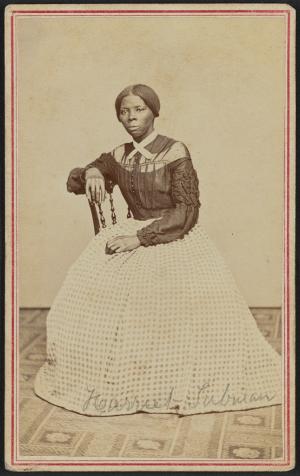
Tubman was born into slavery in 1822, and later escaped from Dorchester County, Maryland to Philadelphia where she lived as a freewoman
Once free, Tubman dedicated her life to the abolition of slavery as a conductor on the Underground Railroad. She brought approximately 70 enslaved African Americans to freedom in the north
Tubman remained a philanthropist well into her later years, founding the Home for Aged & Indigent Negroes and supporting women’s rights
"I had reasoned this out in my mind; there was one of two things I had the right to, liberty or death; if I could have one, I would have the other.” – Harriet Tubman, 1886
Early life .
Born Araminta Ross (and affectionately called "Minty") in March of 1822 to parents Harriet (Rit) Green Ross and Benjamin Ross, Tubman was one of nine children. The Ross family were enslaved in Dorchester County, Maryland. Chattel slavery determined that Black people were property that were bought and sold. The children of enslaved women were also considered enslaved, regardless of whether their fathers were enslaved or not. Such was the case for Tubman and her siblings as Benjamin was free, but Rit was not (University at Buffalo). The Ross’ enslaver, Edward Brodess, did not allow the family to remain together and worked to split them up through the assignment of work. Separated from Benjamin Ross at a young age, Rit, Araminta and her siblings worked on a different farm owned by the Brodesses in Bucktown, Maryland (NPS n.d.).
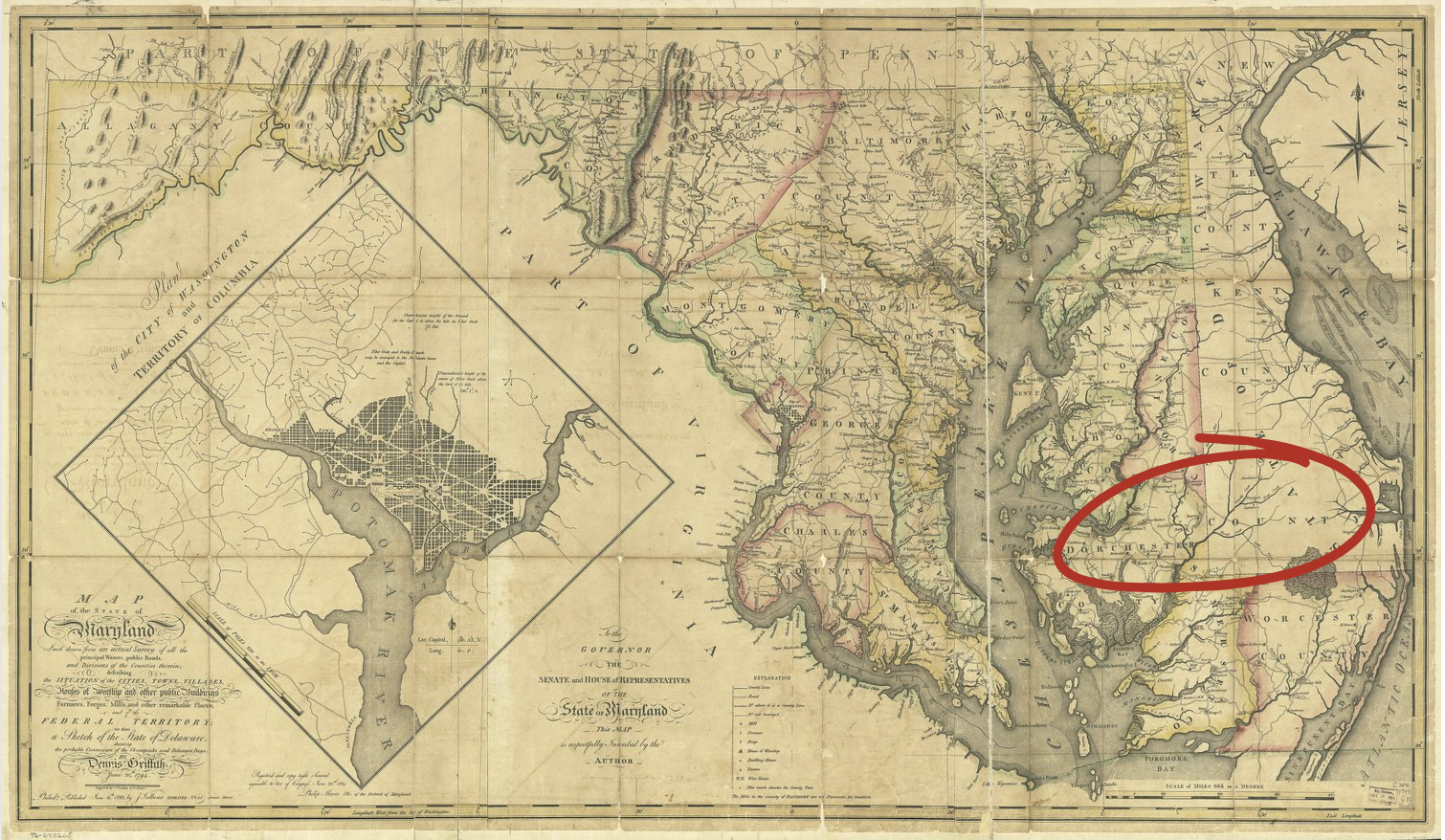
In 1828 at the age of six, Brodess rented out Tubman at his whim to provide childcare for nearby overseers. Compensation for her work would go to Brodess and time periods for how long she would be rented out would vary. This work separated her from her mother and siblings for extended periods of time. Tubman's life would change forever at the age of 13. In 1835, while she was running errands at a local store, she witnessed another enslaved person’s attempted escape (Owens 2022). She refused to assist the freedom seeker's enslaver in capturing the fugitive. As the enslaver became desperate in their attempt to recapture the freedom seeker, he threw a two pound weight. Rather than hitting the intended target, he struck Tubman in the back of the head and fractured her skull.
She teetered between life and death. Her mother Rit nursed Tubman back to health as much as she could given their limited resources (NPS n.d.). After the incident, physical pain became a consistent part of Tubman’s life. She experienced chronic pain from headaches and uncontrollable bouts of seizures, which Tubman herself referred to as “sleeping spells," (PBS 2022). Historians now know that Tubman had narcolepsy, which is a “chronic neurological disorder that affects the brain's ability to control sleep-wake cycles” (National Institute of Neurological Disorders and Stroke n.d.).
Tubman’s place in disability history is often overlooked. It is important to note that narcolepsy was a prominent part of both her identity and story. Vivid visions of freedom came to her while experiencing these seizures (PBS 2022). As a result of her visions, her disability is often associated with her religiosity. However, Tubman’s dedication to her faith and her experience with chronic pain hold equal weight. Both elements were key in her determination to seek liberation for the enslaved. Historian Deidre Cooper Owens spoke to the importance of Tubman’s disability in her essay "Harriet Tubman’s Disability and Why it Matters." Cooper-Owens highlighted that, “she offered up a version of freedom where a disabled Black woman sat at the center of it, where Black women were liberators, and where liberation was communal and democratic” (Owens 2022).
Journey to Freedom
The pain of separation from her family and the cruelty of slavery never left Tubman. Forced back to the fields immediately after her injury, Tubman recounted: “there I worked with the blood and sweat rolling down my face til I couldn’t see” (Wickenden 2021). She became determined to find some sense of autonomy wherever she could, despite the confines of enslavement (NPS n.d.). She negotiated with her enslaver to select her own work assignments. He agreed so long as she paid him a yearly fee. From then on, Tubman hired herself out on her own terms.
With new tasks came the exploration of new geographic areas. Dorchester County’s environment is marshland (NPCA n.d.). As such, the duties given to the enslaved in this area were unique to the landscape of Maryland’s Eastern Shore. Tubman became familiar with the intricacies of the environment through these tasks. Down the line, her familiarity with Dorchester County would be key in her journey to freedom.
In an unexpected turn of events, one assignment required her to work alongside her father in the timber fields. Not only did this allow her to spend time with him despite years of separation, but also to work alongside Black sailors. As regular travelers along the East Coast, these men were well connected. They shared their knowledge of the surrounding areas with Tubman and assisted her in tapping into a network of those also seeking liberation (Wickenden 2021). It was around this time that she met her future husband, freedman John Tubman. The couple married in 1844 when Tubman was 22 years old. Upon their union, she changed her name from Araminta “Minty” Ross, to Harriet (likely after her mother) Tubman (NPS n.d.).
Tubman cherished moments spent with her father and her time as a newlywed. However, her enslaver Brodess struggled financially and found himself in debt in 1849. He decided to sell more of his enslaved workers as a financial solution. Tubman discovered that Brodess’s financial troubles were likely to lead to the sale of her and her brothers, Ben and Henry (Wickenden 2021). Even Brodess’s death in 1849 did not alleviate Tubman’s fear of the sale and Tubman sought to make her dreams of freedom a reality. She saw her future clearly, detailing to biographer Sarah Hopkins Bradford what she envisioned as she crossed the Mason-Dixon line that separates Pennsylvania, Maryland, Delaware, and West Virginia: “and on the other side of that line were green fields, and lovely flowers, and beautiful white ladies who stretched out their arms to me over the line” (Tubman, 1869).
Making use of her wealth of knowledge gained over the years, Tubman set her sights on escaping to Philadelphia. The Abolitionist Movement, which was prominent in the city, meant she was sure to find allies and like-minded confidants (University at Buffalo n.d.). After developing a route, the journey with her brothers began. While on the journey, the trio caught word that Eliza Broddess, Brodess’s widow, placed an ad in the paper calling for their return (Balkansky 2020). Tubman’s brothers decided to return to the plantation for fear of capture and subsequent punishment. Not the slightest bit discouraged, the visions that came to Tubman during narcoleptic bouts assured her she would be free (Wickenden 2021). She pressed onward alone, guided to Pennsylvania by the stars.
The Moses of Her People: Conducting the Underground Railroad
With the help of abolitionists along the way, Tubman journeyed from the Brodess’ farm in Maryland to Pennsylvania. In Philadelphia, she made connections with abolitionists, namely William Still, a conductor on the Underground Railroad (Larson 2004). Tubman learned more about the Underground Railroad from Still. Often misunderstood as a railroad with tracks and trains, the Underground Railroad (UGRR) actually refers to various safehouses in which abolitionists provided sanctuary for freedom seekers. “Conductors” led the journeys to freedom, while “Station Masters” hosted freedom seekers within their homes, churches, or other safe spaces. The more Tubman learned, the more her desire to see her family free grew. She decided to return for them in 1850.
After a successful first trip in which she brought both family and friends to freedom, she became a Conductor on the UGRR. She succeeded in her second journey as well and, on her third in 1851, Tubman returned for her husband, John. She quickly discovered that he thought she was dead and had remarried. John’s new wife was pregnant. Though heartbroken, Tubman’s commitment to freedom knew no bounds. She offered to take the couple to freedom, but John refused.
In 1850, Congressional passage of the Fugitive Slave Act changed the calculus for Conductors like Tubman. The Act “stipulated that it was illegal for any citizen to assist an escaped slave and demanded that if an escaped slave was sighted, he or she should be apprehended and turned in to the authorities for deportation back to the ‘rightful’ owner down south. Any United States Marshall who refused to return a runaway slave would pay a hefty penalty of $1,000,” (University at Buffalo n.d.). Many freedom seekers opted to flee to Canada instead of the northern US as a result. Tubman conducted eleven trips from Maryland to St. Catherines, Ontario, Canada between 1850 and 1860. All of these journeys–19 in total– over the years made Tubman a hero, with many African Americans–both free and enslaved–dubbing her “Moses” after the biblical figure (Library of Congress 1998 and Balkansky 2020).
While widely celebrated within her own community, Tubman was infamous among enslavers. Many called for her capture with bounties upwards of $40,000, which would be approximately $1,573,056.41 in today’s dollars. Between 1850 to 1860, Tubman brought approximately 70 individuals (including her parents, Rit and Ben) to freedom. Tubman spoke proudly of her accomplishments and famously stated, “I never ran my train off the track and I never lost a passenger” (Prescod-Weinstein 2022).
General Tubman: The Union Spy
In 1857, after working to free her parents, Tubman initially brought them to Canada with her but ultimately settled in Auburn, New York. Auburn was a hotbed of abolition and felt like an ideal place for Tubman and her family to settle. Frances Seward, abolitionist wife of Senator (and later Secretary of State under President Abraham Lincoln) William H. Seward, offered Tubman land in Auburn (University at Buffalo n.d.). This further encouraged the family to stay. Though Tubman had her freedom, the fight for the liberation of the enslaved still called to her.
In 1857, she met abolitionist John Brown. Brown was outspoken in his support of antislavery and, though unpopular among white southerners, his efforts were largely supported by those in the North. Tubman and Brown formed a close friendship, with Brown dubbing her “General Tubman” (NPS n.d.). She once claimed to have seen him in many of her narcoleptic dreams before meeting him. The pair worked together, including on Brown’s plans for the raid on Harpers Ferry, (now West) Virginia; Tubman provided her geographical expertise and recruited formerly enslaved people to assist in the raid. While planned as a way to steal guns and start a revolt to free enslaved people across the South, the raid ultimately ended in failure. An army unit, led by future Confederate General Robert E. Lee, captured Brown and put him on trial for "treason, murder, and inciting a slave rebellion" (NPS n.d.). Brown was hung shortly thereafter. Tubman was not in attendance at his hanging due to illness.
In April 1861, the American Civil War broke out over the issue of slavery. Tubman saw an opportunity to get involved, enlisting in the Union (Northern) Army as a nurse where she cared for wounded soldiers with natural remedies (University at Buffalo n.d.). In 1863, Tubman took on the role of a scout and organized a group of spies. She recruited enslaved people interested in assisting the Union. Tubman helped Colonel James Montgomery coordinate the Combahee River Raid in South Carolina, which aimed to “harass whites and rescue freed slaves” (University at Buffalo n.d.). The raid was wildly successful with Montgomery’s troops burning down many plantations and freeing approximately 750 enslaved people. (NPS n.d.). With their newfound freedom, many of the formerly enslaved men opted to join the Union’s fight against the Confederacy (the South). To date, Tubman is recognized as the first woman in US history to both plan and lead a military raid. In June 2021, the Army inducted her into the Military Intelligence Corps (Lacdan 2023).
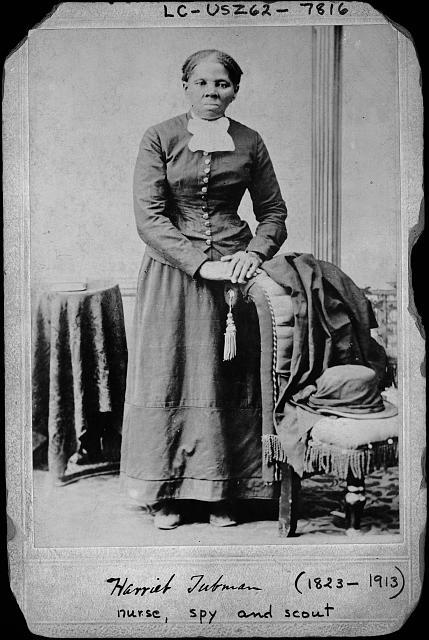
Later Life and Legacy
During her time with the Union Army, Tubman met her second husband, Nelson Davis. The couple married in 1869 in Auburn, NY where he, Tubman, and her freed family members (one of which was their adopted daughter, Gertie), would live out their days (NPS n.d.). Nelson built the family a home, which still stands as of 2024. It is also in Auburn where Tubman founded the Home for the Aged, an institution that provided care for those with “paralysis, epilepsy, and those with vision impairment and blindness,” (Shoot 2021).
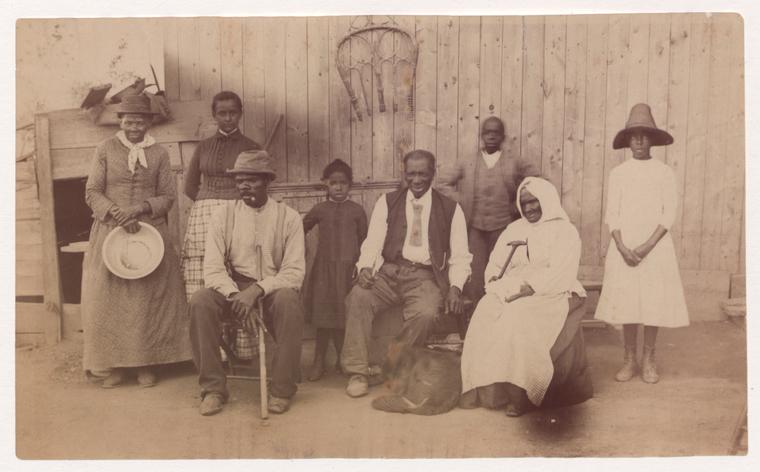
A staunch supporter of the suffrage movement , Tubman worked alongside various upstate-NY based suffragists, such as Lucretia Mott , Susan B. Anthony , and Elizabeth Cady Stanton . The interests of abolitionists were aligned closely with those of suffragists, with both movements concerned with autonomy and freedom. Later in life, Tubman attended various women’s rights conferences (Balkansky 2020). She also collaborated with the AME Zion Church, helping them raise money to build their church in Auburn (NPS n.d.). As collaborative partners, the church then supported Tubman’s dream of making the Home for the Aged a reality.
Nelson Davis passed away in 1888. In his absence, Tubman continued to dedicate her final 25 years to philanthropic efforts. In 1913, at the age of 91, Harriet Tubman died of pneumonia in the Home for the Aged & Indigent Negroes. In her final words, Tubman called upon her faith and made reference to John 14:3 in the Bible. She stated, “I go away to prepare a place for you, that where I am you also may be” (Larson 2004, p. 289). She was laid to rest in the Fort Hill Cemetery in Auburn.
Of service to her community until the very end, Harriet Tubman’s legacy remains relevant. As of 2024, the United States Mint launched the 2024 Harriet Tubman Commemorative Coin Program . The program is timely as it honors the two hundredth anniversary of Harriet Tubman’s birth. Continued discussions about and homages to Tubman stems from her powerful narrative of taking control of her own destiny and ultimately forging a path for others. She is celebrated not only for the hundreds of enslaved that she freed over the course of her lifetime, but for all of those who still look to her story for guidance. Just as she looked to the North Star to carry her to freedom, her work and values remain a guiding light to many to continue onward–no matter how harrowing the path ahead.
Primary Source Analysis
Image 1 caption: This map highlights in red Dorchester County, Maryland. Located right along the coast, it has direct access to water.
Primary Source Analysis Questions:
At first glance, what do you notice about the map? Now, examine the map closely. What do you notice that you did not see the first time?
Who is the intended audience of this map?
Spot Dorchester County. What does being able to locate it on a map make you wonder?
Image 2 caption: Tubman is seen posing for a portrait sometime between 1871 and 1876, expression neutral while she rests her hands on a chair. The bottom of the image reads “Harriet Tubman (1822-1913)” and “Nurse, spy and scout”.
What is the first thing you notice when looking at this image? Why do you think you might have gravitated towards that first?
Based on the events mentioned in the biography between 1871 and 1876 (when this image was thought to be taken), why might Tubman have had this portrait taken?
What do you notice about her appearance (her attire, hair, etc)?
The caption “nurse, spy and scout” omits words such as “conductor, abolitionist, formerly enslaved” etc. Do you believe Tubman would have agreed with the caption? If she dictated it herself, why do you think she might have wanted to be known by those three labels?
Image 3 caption: Tubman (on the far left) is photographed alongside her husband Nelson Davis, adopted child Gertie, and various other family members. This photograph was taken in Auburn, NY on the Tubman-Davis property.
Primary Source Analysis Questions:
When examining this photo of Tubman surrounded by family, what questions come to mind?
Reflect on Tubman’s journey to freedom. What is the significance of this image of her photographed with so many of her family members?
In comparison to the previous images of Tubman, what differences do you notice in how she appears in this photograph?
Educator Notes
"Teacher's Guide Analyzing Primary Sources," Library of Congress
This resource outlines different lenses that students can examine through primary resources through. There is no specific order to use the columns in. The questions students develop through their examination are meant to encourage further research and curiosity. Educators can then propose other activities (as outlined in the resource) that help students further contextualize different - but related - primary sources
"Primary Source Analysis Tool," Library of Congress
This is a blank version of the previous link. Educators can create their own specific sample questions (most likely based on the medium of the primary source to have students answer in each column, or simply have students fill out this document with the guidance of the original document.
"Teacher's Guide Analyzing Maps," Library of Congress
Similar to the first resource, this document specifically focuses on how to analyze maps. The questions highlighted in each column still use the “Observe, Reflect, Question” model, but allow students to further hone in on the unique features of maps - such as the one featured in this biography.
For further information or questions, please contact [email protected] .

This biography is sponsored in part by the Library of Congress Teaching with Primary Sources Eastern Region Program, coordinated by Waynesburg University.
- Lacdan, Joe. “Army Honors Female Combat Pioneer, Renowned Abolitionist.” www.army.mil. August 25, 2023. https://www.army.mil/article/269360/army_honors_female_combat_pioneer_renowned_abolitionist .
- Balkansky, Arlene. Harriet Tubman: Conductor on the Underground Railroad. June 16, 2020. https://blogs.loc.gov/headlinesandheroes/2020/06/harriet-tubman-conductor-on-the-underground-railroad/
- “Harriet Tubman’s Story.” National Parks Conservation Association. n.d. https://www.npca.org/articles/2162-harriet-tubman-s-story .
- Harriet Tubman Timeline. University at Buffalo. n.d. http://math.buffalo.edu/~sww/0history/hwny-tubman.html.
- “Tubman.” National Parks Service. n.d. https://www.nps.gov/hatu/learn/historyculture/htubman.htm .
- Larson, Kate Clifford, Bound for the Promised Land: Harriet Tubman, Portrait of an American Hero . New York, Ballantine, 2004.
- London, Nicole, Stanley, Nelson and Christopher, Haley. 2022. Harriet Tubman: Visions of Freedom . [San Francisco, California, USA]: PBS.
- Owens, D. C. Harriet Tubman’s disability and why it matters. Ms. Magazine. February 10, 2022. https://msmagazine.com/2022/02/10/harriet-tubman-disability-democracy/
- Prescod-Weinstein, Dr. Chanda. “Harriet Tubman, Astronomer Extraordinaire.” Ms. Magazine, February 3, 2023. https://msmagazine.com/2022/02/03/harriet-tubman-astronomer-underground-railroad-north-star-nasa/ .
- Shoot, B. (2021). The brain injury that helped end slavery. Folks. n.d. https://folks.pillpack.com/brain-injury-helped-end-slavery/
- “The African American Odyssey: A Quest for Full Citizenship Abolition, Anti-Slavery Movements, and the Rise of the Sectional Controversy.” Library of Congress, February 9, 1998. https://www.loc.gov/exhibits/african-american-odyssey/abolition.html .
- “When John Brown Met Harriet Tubman.” National Parks Service. n.d. https://www.nps.gov/hafe/learn/historyculture/when-john-brown-met-harriet-tubman.htm .
- Wickenden, Dorothy. “Liberty or Death: On the Prophetic Visions and Unflinching Will of Harriet Tubman.” Literary Hub, March 31, 2021. https://lithub.com/liberty-or-death-on-the-prophetic-visions-and-unflinching-will-of-harriet-tubman/ .
- http://www.math.buffalo.edu/~sww/0history/hwny-tubman.html
Image Citations
- Griffith, Dennis, James Thackara, and J Vallance. Map of the State of Maryland laid down from an actual survey of all the principal waters, public roads, and divisions of the counties therein; describing the situation of the cities, towns, villages, houses of worship and other public buildings, furnaces, forges, mills, and other remarkable places; and of the Federal Territory; as also a sketch of the State of Delaware shewing the probable connexion of the Chesapeake and Delaware Bays. [Philadelphia, J. Vallance, 1794] Map. https://www.loc.gov/item/76693265/ .
- Lindsley, Harvey B, photographer. Harriet Tubman, full-length portrait, standing with hands on back of a chair. , ca. 1871. [Between and 1876] Photograph. https://www.loc.gov/item/2003674596/ .
- Powelson, Benjamin F, photographer. Portrait of Harriet Tubman / Powelson, photographer, 77 Genesee St., Auburn, New York. New York, 1868. [Auburn, N.Y.: Benjamin Powelson, or 1869] Photograph. https://www.loc.gov/item/2018645050/ .
- United States Mint. Harriet Tubman 2024 Proof Silver Dollar Coin. 2024. https://catalog.usmint.gov/harriet-tubman-2024-proof-silver-dollar-coin-24CL.html?cgid=harriet-tubman-commemorative-coins#start= 1
- Schomburg Center for Research in Black Culture, Photographs and Prints Division, The New York Public Library. "Harriet Tubman; Gertie Davis; Nelson Davis; Lee Cheney; "Pop" Alexander; Walter Green; Sarah Parker; and Dora Stewart " New York Public Library Digital Collections. https://digitalcollections.nypl.org/items/510d47df-793f-a3d9-e040-e00a18064a99
MLA – Dawson, Shay. "Harriet Tubman-Davis." National Women's History Museum. National Women's History Museum, 2024. Date accessed.
Chicago - Dawson, Shay. “Harriet Tubman-Davis" National Women's History Museum. 2024. www.womenshistory.org/education-resources/biographies/ harriet-tubman .
- Bradford, Sarah Hopkins. Harriet, the Moses of Her People. Chapel Hill: The University of North Carolina Press, 2012. muse.jhu.edu/book/19228 .
- Hobson, Janell, Michelle D. Commander, Dr. Chanda Prescod-Weinstein, Dr. Kate Clifford Larson, Deirdre Cooper Owens, Dr. Edda L. Fields-Black, Janell Hobson, et al. “The Harriet Tubman Bicentennial Project.” Ms. Magazine, February 1, 2023. https://msmagazine.com/tubman200/ .
- Library of Congress. Research guides: Harriet Tubman: Topics in Chronicling America: Search Strategies & Selected Articles. N.d. https://guides.loc.gov/chronicling-america-harriet-tubman/selected-articles.
Related Biographies

Stacey Abrams

Abigail Smith Adams

Jane Addams

Toshiko Akiyoshi
Related background, “when we sing, we announce our existence”: bernice johnson reagon and the american spiritual', silences in the archive: women's history and primary sources (civil war), mary church terrell , belva lockwood and the precedents she set for women’s rights.
Get recommended reads, deals, and more from Hachette
By clicking ‘Sign Up,’ I acknowledge that I have read and agree to Hachette Book Group’s Privacy Policy and Terms of Use
Site Preferences
Free shipping on orders $45+ Shop Now .
Harriet Tubman
The Road to Freedom
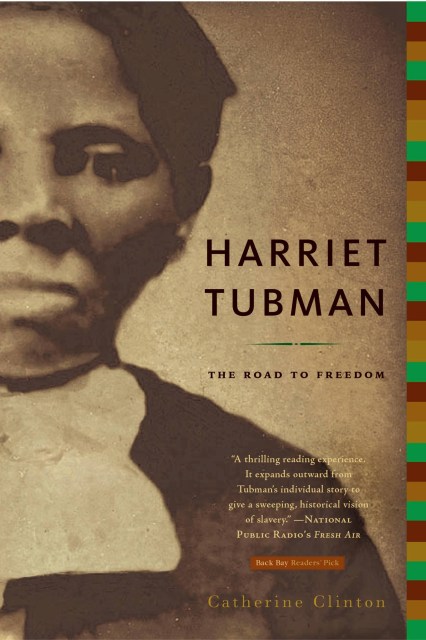
Contributors
By Catherine Clinton
Formats and Prices
- Audiobook Download (Unabridged)
- Trade Paperback $19.99 $25.99 CAD
- ebook $10.99 $13.99 CAD
This item is a preorder. Your payment method will be charged immediately, and the product is expected to ship on or around January 5, 2005. This date is subject to change due to shipping delays beyond our control.
Also available from:
- Barnes & Noble
- Books-A-Million
Description
- Biography & Autobiography
- "A thrilling reading experience. It expands outward from Tubman's individual story to give a sweeping, historical vision of slavery." NPR's Fresh Air
- "Clinton's well-researched book reveals Harriet Tubman to be even more remarkable than her legend." Liza Featherstone, Newsday
- "Superior. Clinton wisely keeps the focus on Tubman and her remarkable life...This compelling biography brings alive the passion of those tormented times." Deirdre Donahue, USA Today
- "A lucid, well-researched biography that contextualizes a remarkable life in all its remarkable accomplishment." Darryl Lorenzo Wellington, Christian Science Monitor
- "Reads more like an adventure tale than a history lesson...This biography provides an in-depth look at Harriet Tubman and holds moments of wonder for readers." Bernadette Adams Davis, BookPage
You May Also Like
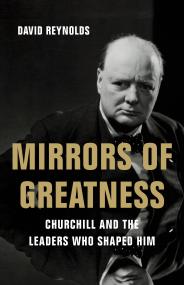
Newsletter Signup
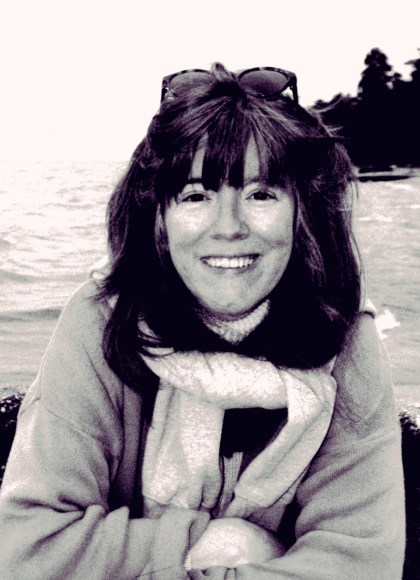
Catherine Clinton
About the author.
Learn more about this author

“I see Harriet Tubman: the Life and the Life Stories as the most important book on Tubman in the last fifty years.” —William L. Andrews
“ Harriet Tubman: The Life and the Life Stories may be the most comprehensive book on Tubman to date. Humez’s book is extremely well researched, and her writing is both incisive and accessible, making it an excellent resource for students as well as for the general reader, interested in learning more about Tubman’s life or black women’s roles in antislavery activism.” —Denise Simon, Black Issues Book Review , February 2004, New York, NY
If you have trouble accessing any page in this web site, contact our Web manager. E-mail: [email protected]
Updated 01/16/2015
Harriet Tubman Library Guide: Biographies of Tubman
- Biographies of Tubman
- Books for Youth
- Slavery, U.S.
- Slave Narratives
- Underground Railroad
- Abolitionist
- Film: Harriet
Selected Books
- << Previous: Home
- Next: Books for Youth >>
- Last Updated: Mar 25, 2023 2:16 PM
- URL: https://guides.library.cornell.edu/tubman
- History of the Civil War
- Who Fought in the Civil War?
- Civil War Causes
- Civil War Battles
- Civil War Timeline

Best Books About Harriet Tubman
Although there have been scores of children’s books published on Harriet Tubman , there are few full scale biographies for adults.
The first book about Tubman was published in 1869 with the assistance of Tubman herself who was nearly destitute and hoped sales from the book would provide some much needed financial assistance for her and her family.
The next Tubman biography wasn’t published until 1942. That book, titled Harriet Tubman: Negro Soldier and Abolitionist, was written by a journalist named Earl Conrad who had great difficulty finding a printer due to widespread racial bias at the time against African-American history. The book quickly went out of print after publication and has remained out of print ever since.
Over 60 years passed until another Tubman biography was published, starting with Jean Humez book in 2003 and Larson and Clinton’s books in 2004.
Despite the lack of books to choose from, I’ve compiled a list of what are considered the best books about Harriet Tubman.
These books have great reviews on sites like Amazon and Goodreads, they are best-sellers on the topic and they have great reviews from critics. I’ve also used many of these books in my research for this website so I can personally say they are some of the best on the topic.
The following is a list of the best books about Harriet Tubman:
(Disclaimer: This article contains Amazon affiliate links. As an Amazon Associate I earn from qualifying purchases.)
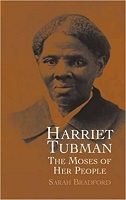
Originally published in 1869, under its original title of Scenes in the Life of Harriet Tubman, and later updated in 1886, this biography was dictated by Harriet Tubman herself. It is a firsthand account of Tubman’s life from her childhood up to the post-War era.
Since Tubman lived until 1913, it only covers part of her life but what it does cover is fascinating. The book discusses Tubman’s childhood as a slave, her time as a conductor on the Underground Railroad, her work as a Civil War nurse and her efforts to educate former slaves after the war.
The book was written to raise badly needed funds for Tubman, who was living in poverty and often spent whatever money she had helping the less fortunate.
According to an article written by fellow Tubman biographer Earl Conrad, the publishing costs of the book were paid for by abolitionists Wendell Phillips and Gerrit Smith and by William H. Seward, Jr, the son of Abraham Lincoln’s Secretary of State, William H. Seward, Sr.
The book was intended to have a section about Tubman’s time in the war, that was to be written by Charles P. Wood, a banker who had worked as a recruiter during the war, but it was never included in the book because it was instead used as testimony by Seward to Congress in his quest to secure a military pension for Tubman.
Fellow Tubman biographer Jean Humez referred to this book as “the most detailed biography of Tubman written during her lifetime.”
According to Humez, the book came about due to Tubman’s storytelling skills:
“Harriet Tubman told stories, sang songs, and performed dramatic re-enactments of many of the life experiences she considered most significant (and most entertaining as well) on public platforms, in private gatherings, in formal interviews, and in conversations with close associates, family members, and visiting strangers over a span of more than sixty years in the North. Her early storytelling performances were memorable events for her listeners, as many of them testified afterward. These sessions helped create a market for the collaborative biography she produced with Sarah Hopkins Bradford three years after the war, a narrative of nearly a hundred pages called Scenes in the Life of Harriet Tubman (1869.) This was actually a patchwork collection of interview-based stories and documentary materials, prepared in haste. Later Bradford revised and expanded it twice, in 1886 and 1901, and renamed it Harriet, the Moses of Her People. Taken together, the three versions of the Bradford biography contains almost all the important stories of her Underground Railroad career and war service that have survived. All later biographers, even if they also interviewed Tubman, relied at least in part on information (and misinformation) from Bradford.”
Another fellow Tubman biographer, Milton C. Sernett, also agrees that Bradford’s biography has influenced all the Tubman biographies that came after hers:
“First issued in 1869, then revised and enlarged in an 1886 edition, Bradford’s rendition of the Tubman story has infected, for good or for ill, almost all subsequent biographical portraits.”
Sarah Bradford, who died in 1912, was a writer who was mostly known for writing children’s books. Bradford was one of the first Caucasian writers to write about African-American topics and one of the first American women writers to write children’s literature.
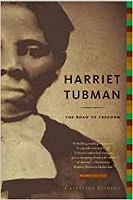
Published in 2004, this book discusses the more well-known events of Tubman’s life as well as the lesser known events such as her role in liberating hundreds of slaves during a raid in the Civil War , as well as the heartbreak of her first marriage and her time as a Civil War nurse.
Clinton explained in the book’s preface that the lack of historical biographies on Tubman are due to a failure on the part of the academic world and is a form of “disremembering” where Tubman is frequently mentioned and referenced but few sources bother to set the record straight about her role and contributions. Clinton explains that she wrote the book in the hopes of humanizing Tubman by letting people see her as a real person in addition to a historic icon.
Clinton’s book received positive reviews when it was published, although some critics have noted that it reads more like an adventure story than a historical work.
Drew Gilpin Faust reviewed the book for the New York Times and said it was not as well researched as other Tubman biographies:
“Catherine Clinton’s ‘Harriet Tubman: The Road to Freedom’ is much less richly researched and less detailed, but draws on the extensive historical writing of recent years about slavery and Civil War to place Tubman’s life within its times — through descriptions of the black Philadelphia in which she found herself after her escape in 1849, of the history of the Underground Railroad, of the impact and aftermath of the Fugitive Slave Law of 1850, of the experiences of war in the coastal South. Clinton, whose books include ‘Fanny Kemble’s Civil Wars,’ frequently speculates about what she cannot know, with such interjections as ‘one can imagine’ or ‘there is every reason to believe.'”
Publisher’s Weekly deemed the book a “revelation” and praised Clinton’s skill at distinguishing speculation from fact:
“Clinton has an extraordinary knack of compressing complex history into an informing brief paragraph or a single sentence, making this ‘first full-scale biography’ of Tubman (1825–1913) a revelation….Clinton is meticulous (without being annoying) in distinguishing the speculative from the known in Tubman’s private life…In her hands, a familiar legend acquires human dimension with no diminution of its majesty and power.”
Catherine Clinton is the Denman Professor of American History at the University of Texas at San Antonio.
Clinton is the author and editor of nearly thirty books on American history including Mrs. Lincoln: A Life; The Plantation Mistress: Women’s World in the Old South; The Devil’s Lane: Sex and Race in the Early South; When Harriet Met Sojourner.
Clinton has served on the executive council of the Society of American Historians, on the Advisory Committee of the Abraham Lincoln Presidential Bicentennial Commission, and is currently on advisory boards for Civil War History, Civil War Times, The President’s Cottage and Soldier’s Home, and Ford’s Theatre. In November 2016, Clinton served as President of the Southern Historical Association.

Published in 2004, this book discusses Tubman’s accomplishments, personal life and her influences. The book dispels the myths and misconceptions about Tubman and provides a complete profile of the American hero.
In the book’s introduction, Larson argues that Tubman’s impressive accomplishments have turned her into a mythical figure who seems to be more legend than truth.
Larson explains that she wanted to correct this by writing a detailed, historically accurate biography about Tubman to help shed light on who she really was:
“The reality of Harriet Tubman’s life is far more compelling than the partly fictionalized biography so familiar to schoolchildren. Why have we been satisfied with the mythical Tubman and why has her biography remained within the province of children’s literature? Although the myths are rooted in actual achievements and serve to enhance the legend of Harriet Tubman, they do so at the expense of her real life story. The true facts of Tubman’s long life, including her years under slavery, her family life, her profound spirituality, her accomplishments as a freedom fighter from her Underground Railroad days to her Civil War exploits and then later her suffrage and community activism, reveal a remarkably powerful and influential life endured during some of the darkest days in American history. Motivated by a deep love of family, Tubman struggled against great odds to bring scores of relatives and friends to freedom in the North. Necessarily shrouded in secrecy at the time, the details of her escape missions have been buried in the historical record for generations. There is, therefore, a need to rediscover Harriet Tubman, to separate reality from myth and to reconstruct a richer and far more accurate historical account of her life.”
To shed new light on Harriet Tubman, the book relies on newly discovered documents, court records, wills, letters, newspaper accounts and genealogical records.
Drew Gilpin Faust reviewed the book for the New York Times, along with several other recent Tubman biographies, and said the book is meticulously researched and provides a lot of details, even though some of the details are not always useful:
“Larson and Humez tend to conjecture less and instead to supply the reader with the considerable information they have collected — sometimes, it seems, more because they have found it than because it adds significantly to our understanding of Tubman’s life.”
Kate Clifford Larson is an author who has written a number of books about women in history such as Rosemary: A Hidden Kennedy Daughter and the Assassin’s Accomplice: Mary Surratt and the Plot to Kill Abraham Lincoln.
Larson also wrote an article titled Racing for Freedom: Harriet Tubman’s Underground Railroad Network Through New York for Afro-Americans In New York Life and History, Vol. 36 No. 1, January 2012.
Larson is the consultant for the Harriet Tubman Special Resource Study of the National Park Service and is a member of the advisory board of the Historic Context on the Underground Railroad in Delaware, Underground Railroad Coalition of Delaware.
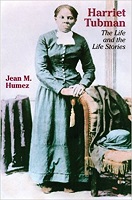
Published in 2004, this book discusses new biographical information as well as old stories and legends about Harriet Tubman.
The book aims to expose the lesser known aspects of Tubman and her life that have been overshadowed by her larger-than-life public image as an American hero.
In the introduction to the book, Humez explains that she wanted to provide a thorough overview of the complex person that Tubman was and hoped to inspire readers to continue the hunt for more lost documents and information about Tubman:
“In providing my own biographical overview in this book (part 1, “The Life), I invite readers to contemplate some of the complexities of the life of the historical woman within the setting of nineteenth-century social and political conflict over the institution of slavery. I build on the work of her former biographers, but with the great advantage of a much larger number of primary sources to work from than were available to any of them. I am very much aware that my retelling of her life story cannot be definitive. Where the “facts” are still not fully known, I hope students of African American history and literature and American culture will be inspired to continue the research. My own experience during the more than ten years in which I did research for this book suggests that many other fascinating lost documents will turn up in libraries and archives in the future, to reward the persistent, imaginative, and lucky explorer.”
Drew Gilpin Faust reviewed the book in the New York Times and praised it as one of the most comprehensive biographies of Tubman to date:
“But Humez spends less than half her book on a biographical treatment of Tubman. The final 200 pages consider the contemporary stories and texts through which we know Tubman, with most of this space devoted to excerpts from the documents themselves. Humez has compiled what she calls Tubman’s ‘core stories,’ accounts of her life Tubman told regularly in her public appearances, and descriptions written by those who interacted with her. Presented as a chronology of her life, these materials paint a far more vivid portrait than any biographer’s account. The reader gains not just glimpses of Tubman, but sees how she confounded even those admirers who still could not comprehend a black woman who behaved like the bravest of men.”
A review published in Black Issues Book Review also agreed that the book was the most comprehensive Tubman biography to date and is well written and well-researched:
“Humez’s book is extremely well researched, and her writing is both incisive and accessible, making it an excellent resource for students as well as for the general reader.”
Jean Humez is a professor of Women’s Studies at the University of Massachusetts. Humez has written numerous books about gender and race such as Gender, Race and Class in Media: A Critical Reader and Mother’s First Born Daughters: Early Shaker Writings on Women and Religion.

Published in 1942, the book chronicles the events of Harriet Tubman’s life.
Conrad wrote the book after meeting Tubman as a young boy in his hometown of Auburn, New York, where Tubman also lived. Conrad explained that meeting Tubman inspired his lifelong interest in social issues, particularly civil rights.
Fellow Tubman biographer Humez said, in the introduction to her book, that Conrad’s was the best Tubman biography to date:
“There have been many popular biographies of Tubman for adults and children produced since her death, but only one work based on careful research into the original sources has as yet appeared: General Harriet Tubman by the politically progressive white writer Earl Conrad, still the standard biography of Tubman. Conrad’s book is both carefully documented and passionately written, yet his Harriet Tubman is still very much a larger-than-life figure. Conrad, a journalist who became interested in black history through experiences as a labor organizer in the 1930s, minimized her spirituality and maximized her role as a militant, an African American woman warrior.”
Another fellow Tubman biographer, Milton C. Sernett, in the introduction to his own book, praised Conrad for using primary sources but ultimately dismissed him as “a journalist, not a trained historian” unfairly implying that only an academic with a PhD can truly understand or write about history.
A review on Goodreads by one of Conrad’s relatives explains how Conrad struggled to get the book published due to racist assumptions from publishers that readers wouldn’t be interested in a book about a black woman:
“This was the first book written by my great uncle, Earl Conrad. He was inspired to write the book by meeting Harriet in their home town of Auburn, NY. This book was published in 1942, after being rejected by over 30 publishers. He states in his book Jim Crow America that all of the publishers gave different reasons for not publishing the book, but they all centered on the racist assumption that a book about a black woman would not be of interest to the general public. It’s crazy to think about how late this book was published (Harriet died in 1913, and did most of the work she was famous for in the 1850s), but also how much our society has grown to accept (and distort) Harriet Tubman’s memory.”
The book is now out of print and existing copies are rare and hard to find.
Earl Conrad, who died in 1986, was a journalist for newspapers such as Auburn Advertiser-Journal, PM, and The Chicago Defender, where he wrote primarily about African-Americans in the South. Conrad later wrote a number of books about black history including Jim Crow America; and The Invention of the Negro.
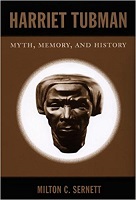
Published in 2007, this book is not so much a biography as it is an analysis of how Harriet Tubman’s public image has changed over time.
The book compares the real life Harriet Tubman with the many biographies and descriptions of Tubman to see how accurate they are.
As Sernett explains in the introduction, his goal with this book is to examine why exactly Tubman has become the iconic American hero that she is:
“My intent in the chapters that follow is not to present a biographical portrait of Harriet Ross Tubman in the traditional manner of historical biographers. Instead, I focus on why it is that someone whose life story has been characterized by the distinguished African American historian Benjamin Quarles as a ’tissue of improbabilities verging on the impossible’ has captured the American imagination so strongly, especially in the recent past. Nevertheless, it is hoped that this attempt to sort out the ‘legend’ from the ‘lady’ will enable readers to learn about the woman who has become a cultural icon. This book undertook two tasks. It seeks to recover the ‘historical’ Tubman in the fashion, for example, of New Testament scholars searching for the historical Jesus behind the literary accretions of the Gospel writers. But it is primarily about the remembered Tubman – that is, about the myth that draws on the factual core but is often in tension with it.”
The Journal of African American History reviewed the book and praised it as an important contribution to the topic:
“However, in Harriet Tubman: Myth, Memory, and History, Milton C. Sernett adds to the Tubman scholarship in an original and engaging manner by using Tubman’s life to examine Tubman’s place in U.S. history and investigate how she ‘has captured the American imagination so strongly, especially in the recent past.’ In weaving together the ‘real Tubman,’ the sainted Tubman, and the symbolic Tubman, Sernett re-presents her as a ‘national icon’ who teaches us ‘about ourselves as the American people.’”
Milton C. Sernett is a professor of history and African American studies at Syracuse University. Sernett has written many books about African-American history such as North Star Country: Upstate New York and the Crusade for African American Freedom; African American Religious History: A Documentary Witness; Bound for the Promised Land: African American Religion and the Great Migration; Abolition’s Axe: Beriah Green, Oneida Institute, and the Black Freedom Struggle; Black Religion And American Evangelism: White Protestants, Plantation Missions, and the Flowering of Negro Christianity, 1787-1865.
Sources: Washington, Margaret. “Review.” The Journal of African American History , vol. 95, no. 2, 2010, pp. 260–262. JSTOR, JSTOR, www.jstor.org/stable/10.5323/jafriamerhist.95.2.0260. Conrad, Earl. “I Bring You General Tubman.” Taylor Francis Online , 14 April. 2015, www.tandfonline.com/doi/abs/10.1080/00064246.1970.11430666?journalCode=rtbs20 Conrad, Earl. “The Charles P. Wood Manuscripts of Harriet Tubman by Earl Conrad.” Harriet Tubman , www.harriettubman.com/cwood.html “Bound for the Promised Land.” Publisher’s Weekly , www.publishersweekly.com/978-0-345-45627-4 Faust, Drew Gilpin. “Then General.” New York Times , 15 Feb, 2004, www.nytimes.com/2004/02/15/books/the-general.html “Harriet Tubman: The Road to Freedom.” Publisher’s Weekly, www.publishersweekly.com/978-0-316-14492-6 Davis, Bernadette. “Harriet Tubman Gets Her Due.” Bookpage , Feb. 2004, bookpage.com/reviews/3329-catherine-clinton-harriet-tubman McPerson, James. “The Moses of Her People.” New York Times , 11 March. 2004, www.nybooks.com/articles/2004/03/11/the-moses-of-her-people/ Chesler, Andrew. “Four Best Biographies of Harriet Tubman and the Underground Railroad.” Signature Reads , 9 March, 2012, www.signature-reads.com/2012/03/best-books-harriet-tubman-underground-railroad/

9 thoughts on “ Best Books About Harriet Tubman ”
I am writing a thesis on Harriet Tubman and her rise to prominence in American history textbooks. Do you know where I may be able to survey textbooks from the 1970s on? I am researching when and how Harriet Tubman became a national figure and was closely associated with the Underground Railroad. I believe this occurred after the Civil Rights era of the 1960s.
Wow, your thesis sounds really interesting. Sites like ebay, amazon and other sites that sell used books are the only places that I can think of that would have old textbooks. I’m not sure if libraries or other research centers would have them. That’s an interesting question that no one has ever asked me before and now I’m curious too. As for Tubman’s rise in popularity, I know it was Sanborn’s 1863 article in the Commonwealth Magazine that first made Tubman famous but I think you’re definitely onto something about her rise in popularity during the Civil Rights era.
What about “Freedom Train: The Story of Harriet Tubman” written in 1954 by Dorothy Sterling. I think I read that book 50 times when I was a kid. It was wonderful.
I am unable to locate some of the mentioned books at the San Francisco Public Library any suggestion where they may be found?
A lot of these books are old and may be hard to find. I don’t know what libraries might have them but you can sometimes find old books for sale online.
Thanks for this post. I read Clinton and Bradford and I am reading Larson now. Good recomendations.
I’m an older white woman who learned about Harriet Tubman in the late 1950’s. Try finding old encyclopedias and old history books used by schools in the north.
Earl Conrad’s book was published by Carter G. Woodson and the Associated Publishers as General Harriet Tubman in 1943. it was republished by the Press in 1990 with a new introduction written after his death by his wife. the book was available to the public from the early 40’s into the 1990’s when the Associated Publishers closed their operation. Black Classic Press republished General Harriet Tubman in 2020. the book is availble for all booksellers and on Amazon.
I am looking for a biography of Harriet Tubman that is written by an African American author. I can’t find one. Do you know of one?
Leave a Reply Cancel reply
Your email address will not be published. Required fields are marked *

- History Classics
- Your Profile
- Find History on Facebook (Opens in a new window)
- Find History on Twitter (Opens in a new window)
- Find History on YouTube (Opens in a new window)
- Find History on Instagram (Opens in a new window)
- Find History on TikTok (Opens in a new window)
- This Day In History
- History Podcasts
- History Vault
Harriet Tubman
By: History.com Editors
Updated: February 20, 2024 | Original: October 29, 2009

Harriet Tubman was an escaped enslaved woman who became a “conductor” on the Underground Railroad, leading enslaved people to freedom before the Civil War, all while carrying a bounty on her head. But she was also a nurse, a Union spy and a women’s suffrage supporter. Tubman is one of the most recognized icons in American history and her legacy has inspired countless people from every race and background.
When Was Harriet Tubman Born?
Harriet Tubman was born around 1820 on a plantation in Dorchester County, Maryland. Her parents, Harriet (“Rit”) Green and Benjamin Ross, named her Araminta Ross and called her “Minty.”
Rit worked as a cook in the plantation’s “big house,” and Benjamin was a timber worker. Araminta later changed her first name to Harriet in honor of her mother.
Harriet had eight brothers and sisters, but the realities of slavery eventually forced many of them apart, despite Rit’s attempts to keep the family together. When Harriet was five years old, she was rented out as a nursemaid where she was whipped when the baby cried, leaving her with permanent emotional and physical scars.
Around age seven Harriet was rented out to a planter to set muskrat traps and was later rented out as a field hand. She later said she preferred physical plantation work to indoor domestic chores.
A Good Deed Gone Bad
Harriet’s desire for justice became apparent at age 12 when she spotted an overseer about to throw a heavy weight at a fugitive. Harriet stepped between the enslaved person and the overseer—the weight struck her head.
She later said about the incident, “The weight broke my skull … They carried me to the house all bleeding and fainting. I had no bed, no place to lie down on at all, and they laid me on the seat of the loom, and I stayed there all day and the next.”
Harriet’s good deed left her with headaches and narcolepsy the rest of her life, causing her to fall into a deep sleep at random. She also started having vivid dreams and hallucinations which she often claimed were religious visions (she was a staunch Christian). Her infirmity made her unattractive to potential slave buyers and renters.
Escape from Slavery
In 1840, Harriet’s father was set free and Harriet learned that Rit’s owner’s last will had set Rit and her children, including Harriet, free. But Rit’s new owner refused to recognize the will and kept Rit, Harriet and the rest of her children in bondage.
Around 1844, Harriet married John Tubman, a free Black man, and changed her last name from Ross to Tubman. The marriage was not good, and the knowledge that two of her brothers—Ben and Henry—were about to be sold provoked Harriet to plan an escape.
Harriet Tubman: Underground Railroad
On September 17, 1849, Harriet, Ben and Henry escaped their Maryland plantation. The brothers, however, changed their minds and went back. With the help of the Underground Railroad , Harriet persevered and traveled 90 miles north to Pennsylvania and freedom.
Tubman found work as a housekeeper in Philadelphia, but she wasn’t satisfied living free on her own—she wanted freedom for her loved ones and friends, too.
She soon returned to the south to lead her niece and her niece’s children to Philadelphia via the Underground Railroad. At one point, she tried to bring her husband John north, but he’d remarried and chose to stay in Maryland with his new wife.
Fugitive Slave Act
The 1850 Fugitive Slave Act allowed fugitive and freed workers in the north to be captured and enslaved. This made Harriet’s role as an Underground Railroad conductor much harder and forced her to lead enslaved people further north to Canada, traveling at night, usually in the spring or fall when the days were shorter.
She carried a gun for both her own protection and to “encourage” her charges who might be having second thoughts. She often drugged babies and young children to prevent slave catchers from hearing their cries.
Over the next 10 years, Harriet befriended other abolitionists such as Frederick Douglass , Thomas Garrett and Martha Coffin Wright, and established her own Underground Railroad network. It’s widely reported she emancipated 300 enslaved people; however, those numbers may have been estimated and exaggerated by her biographer Sarah Bradford, since Harriet herself claimed the numbers were much lower.
Nevertheless, it’s believed Harriet personally led at least 70 enslaved people to freedom, including her elderly parents, and instructed dozens of others on how to escape on their own. She claimed, “I never ran my train off the track and I never lost a passenger.”
Harriet Tubman's Civil War Service
When the Civil War broke out in 1861, Harriet found new ways to fight slavery. She was recruited to assist fugitive enslaved people at Fort Monroe and worked as a nurse, cook and laundress. Harriet used her knowledge of herbal medicines to help treat sick soldiers and fugitive enslaved people.
In 1863, Harriet became head of an espionage and scout network for the Union Army. She provided crucial intelligence to Union commanders about Confederate Army supply routes and troops and helped liberate enslaved people to form Black Union regiments.
Though just over five feet tall, she was a force to be reckoned with, although it took over three decades for the government to recognize her military contributions and award her financially.
Harriet Tubman’s Later Years
After the Civil War, Harriet settled with family and friends on land she owned in Auburn, New York . She married former enslaved man and Civil War veteran Nelson Davis in 1869 (her husband John had died 1867) and they adopted a little girl named Gertie a few years later.
Harriet had an open-door policy for anyone in need. She supported her philanthropy efforts by selling her home-grown produce, raising pigs and accepting donations and loans from friends. She remained illiterate yet toured parts of the northeast speaking on behalf of the women’s suffrage movement and worked with noted suffrage leader Susan B. Anthony .
In 1896, Harriet purchased land adjacent to her home and opened the Harriet Tubman Home for Aged and Indigent Colored People. The head injury she suffered in her youth continued to plague her and she endured brain surgery to help relieve her symptoms. But her health continued to deteriorate and eventually forced her to move into her namesake rest home in 1911.
Pneumonia took Harriet Tubman’s life on March 10, 1913, but her legacy lives on. Schools and museums bear her name and her story has been revisited in books, movies and documentaries.
Harriet Tubman: $20 Bill
Tubman even had a World War II Liberty ship named after her, the SS Harriet Tubman.
In 2016, the United States Treasury announced that Harriet’s image will replace that of former President and slaveowner Andrew Jackson on the $20 bill. Treasury Secretary Steven Mnuchin (who served under President Trump) later announced the new bill would be delayed until at least 2026. In January 2021, President Biden's administration announced it would speed up the design process to mint the bills honoring Tubman's legacy.

HISTORY Vault: Black History
Watch acclaimed Black History documentaries on HISTORY Vault.
Early Life. Harriet Tubman Historical Society.
General Tubman: Female Abolitionist was Also a Secret Military Weapon. Military Times.
Harriet Tubman Biography. Biography.
Harriet Tubman Home for the Aged, Residence, and Thompson AME Zion Church. National Park Service.
Harriet Tubman Myths and Facts. Bound for the Promised Land: Harriet Tubman Portrait of An American Hero by Kate Clifford Larson, Ph.D.
Harriet Tubman. National Park Service .
Harriet Tubman. National Women’s History Museum.
Harriet Tubman: The Moses of Her People. Harriet Tubman Historical Society.
Harriet Tubman Underground Railroad. National Park Service.

Sign up for Inside History
Get HISTORY’s most fascinating stories delivered to your inbox three times a week.
By submitting your information, you agree to receive emails from HISTORY and A+E Networks. You can opt out at any time. You must be 16 years or older and a resident of the United States.
More details : Privacy Notice | Terms of Use | Contact Us
Harriet Tubman
Harriet Tubman escaped slavery to become a leading abolitionist. She led dozens of fugitive slaves to freedom along the route of the Underground Railroad and assisted scores of others.
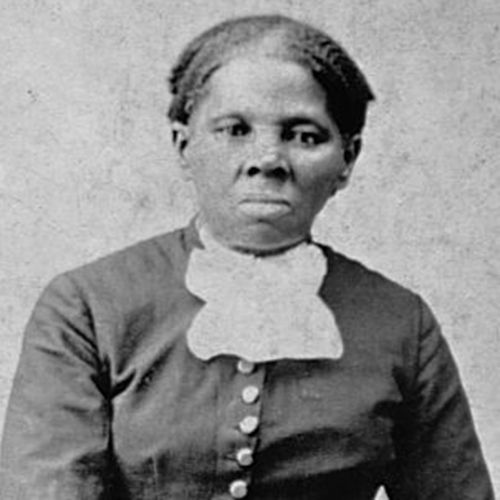
We may earn commission from links on this page, but we only recommend products we back.
c. 1820-1913
Quick Facts
Early life and family, escape to philadelphia, underground railroad conductor, how many slaves did harriet tubman free, husbands and children, how did harriet tubman die, tubman on the new $20 bill, tubman in tv and film, who was harriet tubman.
Born into slavery in Maryland, Harriet Tubman escaped to freedom in the North in 1849 to become the most famous “conductor” on the Underground Railroad . Tubman risked her life to lead dozens of family members and other slaves from the plantation system to freedom on this elaborate secret network of safe houses. A leading abolitionist before the American Civil War , Tubman also helped the Union Army during the war, working as a spy , among other roles.
After the Civil War ended, Tubman dedicated her life to helping impoverished former slaves and the elderly. In honor of her life and by popular demand, in 2016, the U.S. Treasury Department announced that Tubman would replace Andrew Jackson on the center of a new $20 bill.
FULL NAME: Araminta Harriet Ross BORN: c. 1820 DIED: March 10, 1913 BIRTHPLACE: Dorchester County, Maryland PARENTS: Harriet Green, Ben Ross SIBLINGS: Linah, Mariah, Soph, Robert, Benjamin, Rachel, Henry, Moses
Tubman’s date of birth is unknown, although she was likely born between 1820 and 1825. According to the National Park Service , oral traditions and recent research suggest she was born in early 1822.
She was one of nine children born between 1808 and 1832 to enslaved parents in Dorchester County, Maryland. Her mother, Harriet “Rit” Green, was owned by Mary Pattison Brodess. Her father, Ben Ross, was owned by Anthony Thompson. (Thompson and Brodess eventually married.)
Originally named Araminta Harriet Ross, Tubman was nicknamed “Minty” by her parents. Araminta changed her name to Harriet around her marriage, possibly to honor her mother.
Harriet Tubman: The Road to Freedom
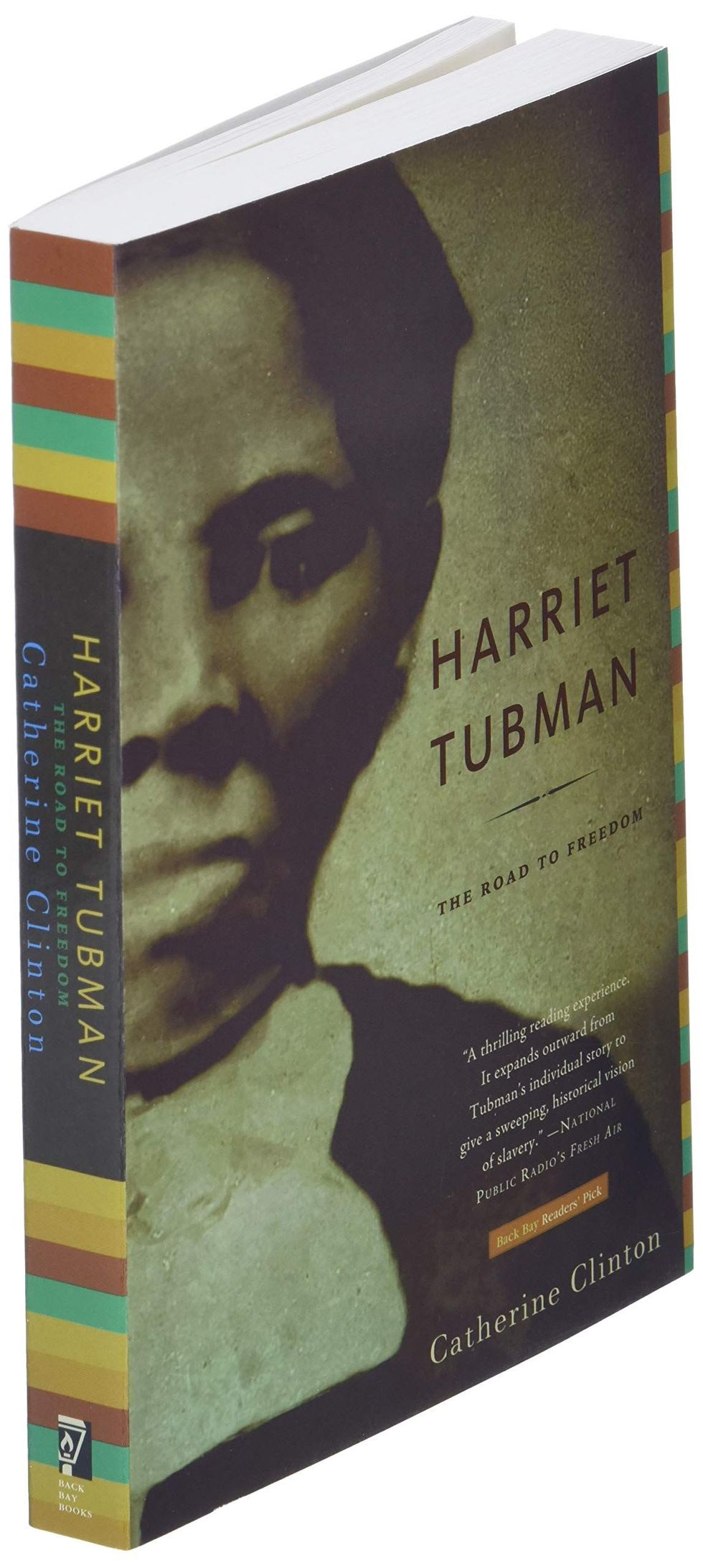
Tubman’s early life was full of hardship. Mary Brodess's son Edward sold three of Tubman’s sisters to distant plantations, severing the family. When a trader from Georgia approached Brodess about buying Rit’s youngest son, Moses, Rit successfully resisted the further fracturing of her family, setting a powerful example for her young daughter.
Physical violence was a part of daily life for Tubman and her family. The violence she suffered early in life caused permanent physical injuries. Tubman later recounted a particular day when she was lashed five times before breakfast. She carried the scars for the rest of her life.
The most severe injury occurred when Tubman was an adolescent. Sent to a dry goods store for supplies, she encountered a slave who had left the fields without permission. The man’s overseer demanded that Tubman help restrain the runaway. When Tubman refused, the overseer threw a two-pound weight that struck her in the head. Tubman endured seizures, severe headaches, and narcoleptic episodes for the rest of her life. She also experienced intense dream states, which she classified as religious experiences.
The line between freedom and slavery was hazy for Tubman and her family. Tubman’s father, Ben, was freed from slavery at the age of 45, as stipulated in the will of a previous owner. Nonetheless, Ben had few options but to continue working as a timber estimator and foreman for his former owners.
Although similar manumission stipulations applied to Rit and her children, the individuals who owned the family chose not to free them. Despite his free status, Ben had little power to challenge their decision.
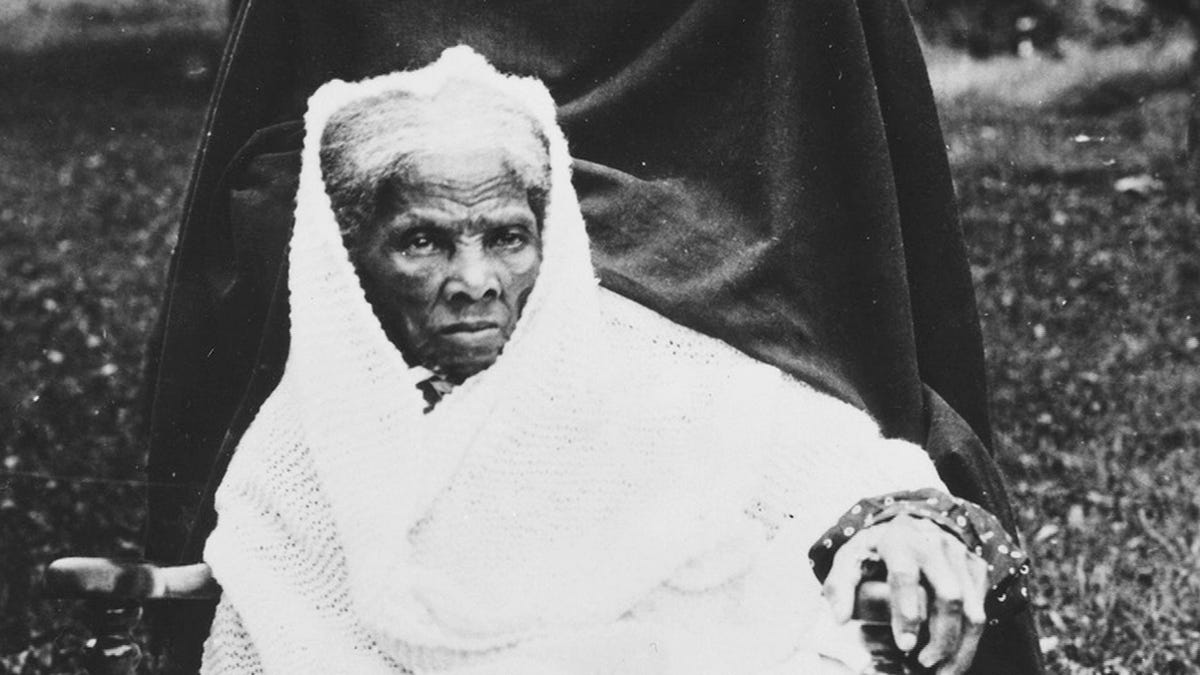
Tubman first encountered the Underground Railroad—an extensive system of people and passages that helped fugitive slaves flee to the northern U.S. states and into Canada—when she used it to escape slavery herself in 1849. Following a bout of illness and the death of her owner, Tubman decided to escape slavery in Maryland for Philadelphia. She feared that her family would be further severed and was concerned for her fate as a sickly slave of low economic value.
Two of her brothers, Ben and Harry, accompanied her on Sept. 17, 1849. However, after a notice was published in the Cambridge Democrat offering a $300 reward for the return of Araminta, Harry and Ben had second thoughts and returned to the plantation. Tubman had no plans to remain in bondage. Seeing her brothers safely home, she soon set off alone for Pennsylvania.
Using the Underground Railroad, Tubman traveled nearly 90 miles to Philadelphia. She crossed into the free state of Pennsylvania with relief and awe and recalled later: “When I found I had crossed that line, I looked at my hands to see if I was the same person. There was such a glory over everything; the sun came like gold through the trees and over the fields, and I felt like I was in Heaven.”
Rather than remaining in the safety of the North, Tubman made it her mission to rescue her family and others living in slavery via the Underground Railroad. She made approximately 13 trips to Maryland to assist family members and friends while serving as a “conductor,” or person responsible for leading fugitives between safe-havens.
In December 1850, Tubman received a warning that her niece, Kessiah, and her two young children would be sold. Kessiah’s husband, a free Black man named John Bowley, made the winning bid for his wife at an auction in Baltimore. Tubman then helped the entire family make the journey to Philadelphia. This was the first of Tubman's numerous trips.
The dynamics of escaping slavery changed in 1850 with the passage of the Fugitive Slave Law. This law stated that escaped slaves could be captured in the North and returned to slavery, leading to the abduction of former slaves and free Black people living in the Free States. Law enforcement officials in the North were compelled to aid in the capture of slaves, regardless of their principles.
In response to the law, Tubman re-routed the Underground Railroad to Canada, which prohibited slavery categorically. In December 1851, Tubman guided a group of 11 fugitives northward. Evidence suggests that the party stopped at the home of abolitionist and formerly enslaved person Frederick Douglass .
In April 1858, Tubman was introduced to the abolitionist John Brown , who advocated the use of violence to disrupt and destroy the institution of slavery. Tubman shared Brown’s goals and at least tolerated his methods. Tubman claimed to have had a prophetic vision of Brown before they met.
When Brown began recruiting supporters for an attack on slaveholders at Harper’s Ferry , he turned to “General Tubman” for help. After Brown’s subsequent execution, Tubman praised him as a martyr.
Tubman remained active during the Civil War. Working for the Union Army as a cook and nurse, Tubman quickly became an armed scout and spy . The first woman to lead an armed expedition in the war, she guided the Combahee River Raid, which liberated more than 700 slaves in South Carolina.
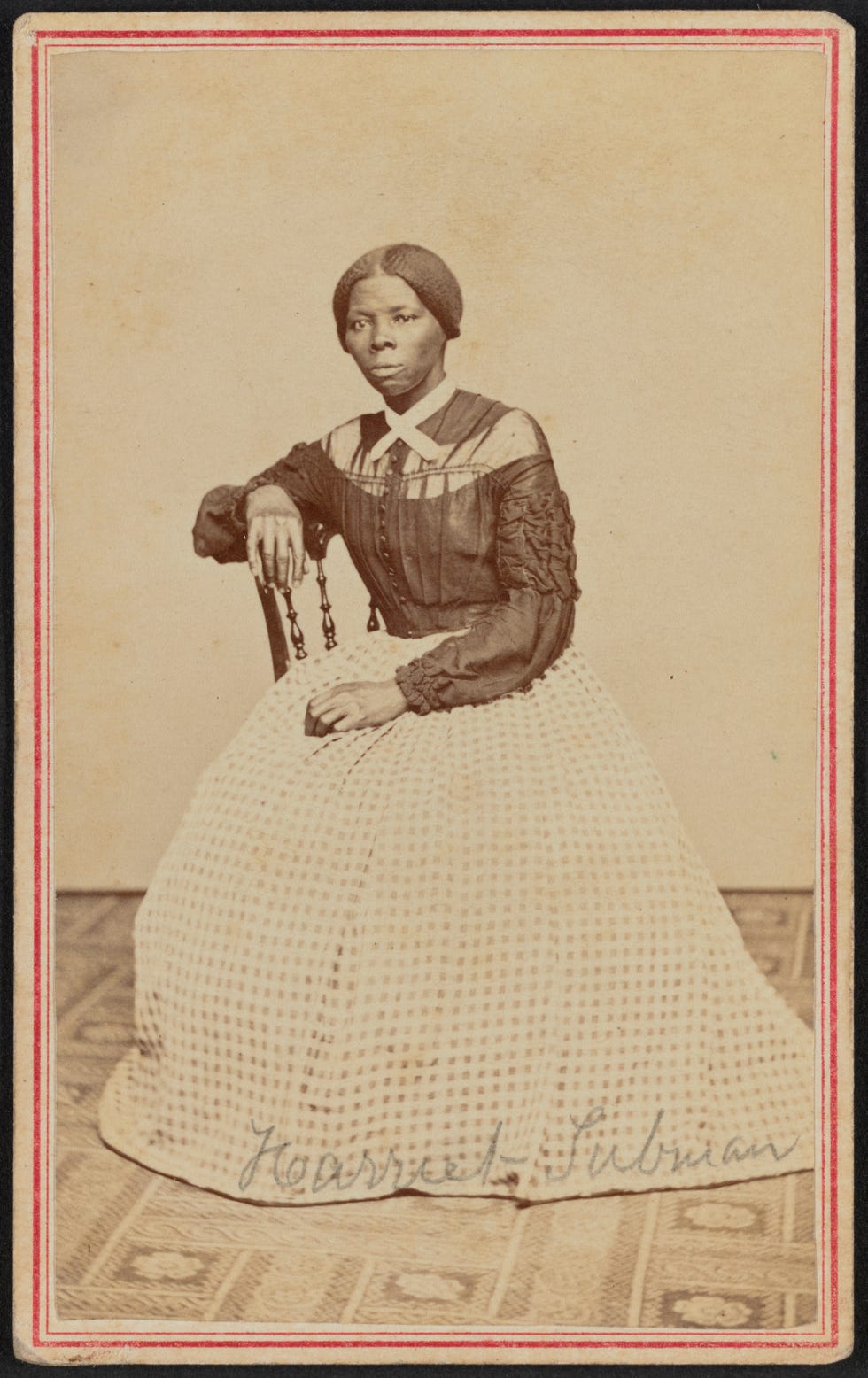
In an 1868 biography, writer Sarah H. Bradford gave an exaggerated estimate of the number of slaves Tubman directly led to safety via the Underground Railroad—as many as 300 across 19 trips. But according to Tubman’s accounts—and extensive documentation of her missions— the number is closer to about 70 family members and friends across 13 trips to Maryland between 1850 and 1860. She did not rescue enslaved people from all across the South , as it would have been too dangerous for her to travel to places where she was not familiar with the geography.
According to the National Park Service , Tubman carried a small pistol with her as a means of protection against slave catchers, as well as to give encouragement to worried runaways who otherwise might turn back and jeopardize the safety of her group.
Additionally, Tubman provided helpful instruction to about 70 slaves from the Eastern Shore who eventually found freedom on their own. Because of these efforts, she earned the nickname “Moses” for her leadership.
In 1844, Harriet married a free Black man named John Tubman. At the time, around half of the African American people on the eastern shore of Maryland were free, and it was not unusual for a family to include both free and enslaved people.
Little is known about John or his marriage to Harriet, including whether and how long they lived together. Any children they might have had would have been considered enslaved since the mother’s status dictated that of any offspring. John declined to make the voyage on the Underground Railroad with Harriet, preferring to stay in Maryland with a new wife.
In 1869, Tubman married a Civil War veteran named Nelson Davis. In 1874, the couple adopted a baby girl named Gertie.
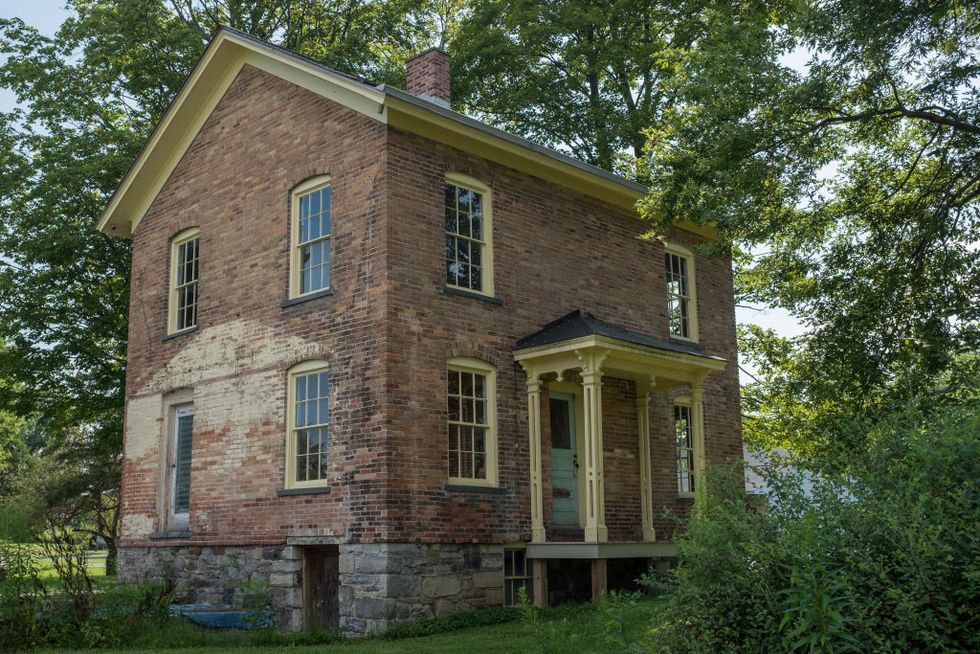
In early 1859, abolitionist Senator William H. Seward sold Tubman a small piece of land on the outskirts of Auburn, New York. The land in Auburn became a haven for Tubman’s family and friends. Tubman spent the years following the war on this property, tending to her family and others who had taken up residence there.
Despite Tubman’s fame and reputation, she was never financially secure. Tubman’s friends and supporters raised some funds to support her. Bradford, an admirer, penned her 1868 biography, Scenes in the Life of Harriet Tubman, with the proceeds going to Tubman and her family.
Tubman continued to give freely despite her economic woes. In 1903, she donated a parcel of her land to the African Methodist Episcopal Zion Church in Auburn. The Harriet Tubman Home for the Aged opened on this site in 1908.
Tubman died of pneumonia on March 10, 1913, surrounded by friends and family, at around 93. As Tubman aged, the head injuries she sustained early in her life became more painful and disruptive. She underwent brain surgery at Boston’s Massachusetts General Hospital to alleviate the pains and “buzzing” she experienced regularly. Tubman was eventually admitted into the rest home named in her honor. She was buried with military honors at Fort Hill Cemetery in Auburn.
DOWNLOAD BIOGRAPHY'S HARRIET TUBMAN FACT CARD

Widely known and well-respected while she was alive, Tubman became an American icon years after she died. At the end of the 20th century, a survey named her as one of the most famous civilians in American history before the Civil War, third only to Betsy Ross and Paul Revere . She continues to inspire generations of Americans struggling for civil rights.
When Tubman died, the city of Auburn commemorated her life with a plaque on the courthouse. Tubman was celebrated in many other ways throughout the nation in the 20th century. Dozens of schools were named in her honor, and both the Harriet Tubman Home in Auburn and the Harriet Tubman Museum in Cambridge serve as monuments to her life.
In April 2016, the U.S. Treasury Department announced that Tubman would replace Jackson on the center of a new $20 bill. The announcement came after the Treasury Department received a groundswell of public comments following the Women on 20s campaign calling for a notable American woman to appear on U.S. currency. The decision was celebrated, as Tubman devoted her life to racial equality and fought for women’s rights.
In June 2015, Treasury Secretary Jacob J. Lew was criticized for saying that a woman would likely appear on the $10 bill, which features a portrait of Alexander Hamilton , the influential founding father who found renewed popularity because of the hit Broadway musical Hamilton . The ultimate decision to have Tubman replace Jackson, a slaveholder who played a role in the removal of Native Americans from their land, was widely praised.
The unveiling of the new $20 bill featuring Tubman was planned for 2020 to coincide with the 100th anniversary of the 19th Amendment, which gave women the right to vote. However, in May 2019, Treasury Secretary Steven Mnuchin announced that no new designs would be unveiled until 2026 due to counterfeiting issues. In June, the Treasury Department’s inspector general said it would investigate why the launch had been delayed.
In January 2021, the Biden administration said it would be “exploring ways to speed up" the release of the Tubman $20.
Multiple reports have suggested the redesigned bill featuring Tubman will debut in 2030 , although that is a “soft date” subject to change based on various factors.
Actor Cicely Tyson portrayed Tubman in A Woman Called Moses , a two-part 1978 miniseries about her life narrated by Orson Welles that aired on NBC.
A more recent adaptation of Tubman’s life was the 2019 movie Harriet , starring Cynthia Erivo as Tubman. The film chronicled Tubman’s life from her first marriage through her service freeing the enslaved. Erivo was nominated for an Oscar, Golden Globe, and Screen Actor’s Guild Award for her role.
Watch Harriet on Prime Video.
- I was the conductor of the Underground Railroad for eight years, and I can say what most conductors can’t say; I never ran my train off the track and I never lost a passenger.
- I had reasoned this out in my mind, there was one of two things I had a right to, liberty or death; if I could not have one, I would have the other.
- I grew up like a neglected weed—ignorant of liberty, having no experience of it.
- I freed a thousand slaves. I could have freed a thousand more, if only they knew they were slaves.
- Oh, Lord! You’ve been with me in six troubles, don’t desert me in the seventh!
- When I found I had crossed that line, I looked at my hands to see if I was the same person. There was such a glory over everything; the sun came like gold through the trees, and over the fields, and I felt like I was in Heaven.
- I had crossed the line of which I had so long been dreaming. I was free; but there was no one to welcome me to the land of freedom, I was a stranger in a strange land.
- I have known her long, and a nobler, higher spirit, or a truer, seldom dwells in the human form.
- The midnight sky and the silent stars have been the witnesses of your devotion to freedom and of your heroism. Excepting John Brown—of sacred memory—I know of no one who has willingly encountered more perils and hardships to serve our enslaved people than you have.
- I bring you one of the best and bravest persons on this continent — General Tubman as we call her.
- We will be ourselves and free, or die in the attempt. Harriet Tubman was not our great-grandmother for nothing.
- We saw the lightning and that was the guns; and then we heard the thunder and that was the big guns; and then we heard the rain falling and that was the blood falling; and when we came to get in the crops, it was dead men that we reaped.
- Much that you have done would seem improbable to those who do not know you as I know you.
- Her tales of adventure are beyond anything in fiction and her ingenuity and generalship are extraordinary.
‘ I ain't got no friend but you. Come to my help, Lord, for I'm in trouble!
Fact Check: We strive for accuracy and fairness. If you see something that doesn't look right, contact us !
The Biography.com staff is a team of people-obsessed and news-hungry editors with decades of collective experience. We have worked as daily newspaper reporters, major national magazine editors, and as editors-in-chief of regional media publications. Among our ranks are book authors and award-winning journalists. Our staff also works with freelance writers, researchers, and other contributors to produce the smart, compelling profiles and articles you see on our site. To meet the team, visit our About Us page: https://www.biography.com/about/a43602329/about-us
Tyler Piccotti first joined the Biography.com staff as an Associate News Editor in February 2023, and before that worked almost eight years as a newspaper reporter and copy editor. He is a graduate of Syracuse University. When he's not writing and researching his next story, you can find him at the nearest amusement park, catching the latest movie, or cheering on his favorite sports teams.
Abolitionists

Ralph Waldo Emerson

Abraham Lincoln
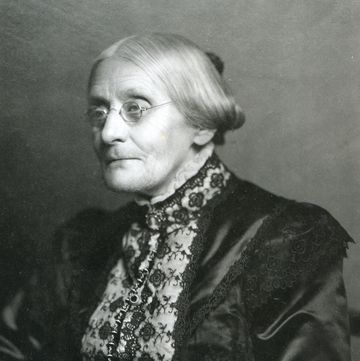
Susan B. Anthony

Lucretia Mott

Harriet Beecher Stowe
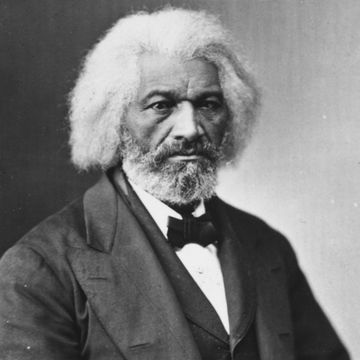
Frederick Douglass
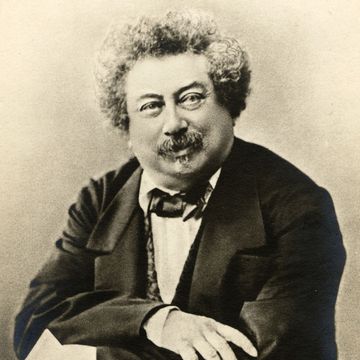
Alexandre Dumas
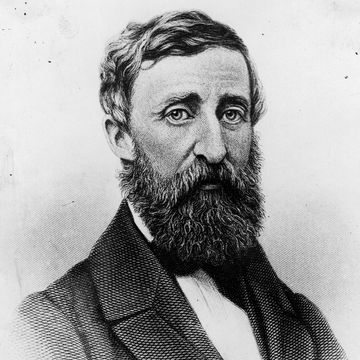
Henry David Thoreau

Mary Ann Shadd Cary
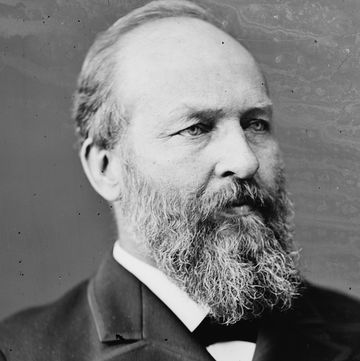
James Garfield
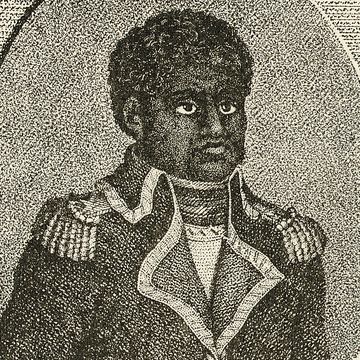
Jean-Jacques Dessalines
We will keep fighting for all libraries - stand with us!
Internet Archive Audio

- This Just In
- Grateful Dead
- Old Time Radio
- 78 RPMs and Cylinder Recordings
- Audio Books & Poetry
- Computers, Technology and Science
- Music, Arts & Culture
- News & Public Affairs
- Spirituality & Religion
- Radio News Archive

- Flickr Commons
- Occupy Wall Street Flickr
- NASA Images
- Solar System Collection
- Ames Research Center

- All Software
- Old School Emulation
- MS-DOS Games
- Historical Software
- Classic PC Games
- Software Library
- Kodi Archive and Support File
- Vintage Software
- CD-ROM Software
- CD-ROM Software Library
- Software Sites
- Tucows Software Library
- Shareware CD-ROMs
- Software Capsules Compilation
- CD-ROM Images
- ZX Spectrum
- DOOM Level CD

- Smithsonian Libraries
- FEDLINK (US)
- Lincoln Collection
- American Libraries
- Canadian Libraries
- Universal Library
- Project Gutenberg
- Children's Library
- Biodiversity Heritage Library
- Books by Language
- Additional Collections

- Prelinger Archives
- Democracy Now!
- Occupy Wall Street
- TV NSA Clip Library
- Animation & Cartoons
- Arts & Music
- Computers & Technology
- Cultural & Academic Films
- Ephemeral Films
- Sports Videos
- Videogame Videos
- Youth Media
Search the history of over 866 billion web pages on the Internet.
Mobile Apps
- Wayback Machine (iOS)
- Wayback Machine (Android)
Browser Extensions
Archive-it subscription.
- Explore the Collections
- Build Collections
Save Page Now
Capture a web page as it appears now for use as a trusted citation in the future.
Please enter a valid web address
- Donate Donate icon An illustration of a heart shape
Harriet Tubman : the life and the life stories
Bookreader item preview, share or embed this item, flag this item for.
- Graphic Violence
- Explicit Sexual Content
- Hate Speech
- Misinformation/Disinformation
- Marketing/Phishing/Advertising
- Misleading/Inaccurate/Missing Metadata
![[WorldCat (this item)] [WorldCat (this item)]](https://archive.org/images/worldcat-small.png)
plus-circle Add Review comment Reviews
4 Favorites
DOWNLOAD OPTIONS
No suitable files to display here.

IN COLLECTIONS
Uploaded by station14.cebu on December 22, 2021
15 Books To Help Introduce Readers of All Ages to Harriet Tubman
Bring the inspiring abolitionist to life for students.
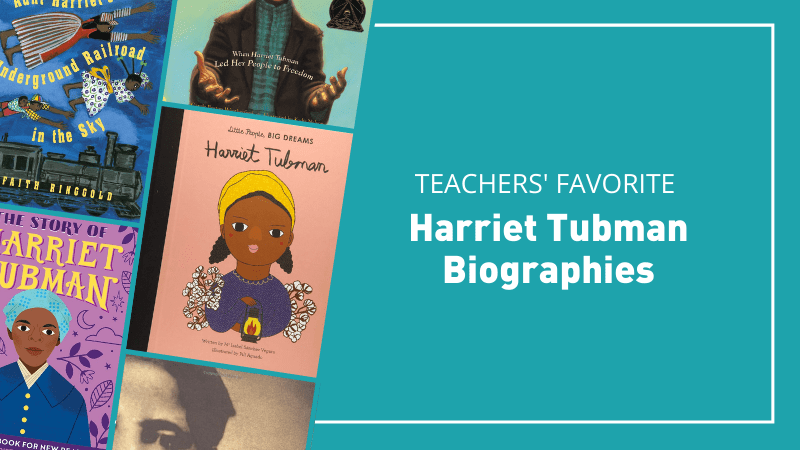
Born into slavery, Harriet Tubman made a harrowing journey North, but her own emancipation wasn’t enough for her. She knew she had to help other enslaved people be free. Tubman went on to serve as a conductor on the Underground Railroad, plus work as a Union spy, a nurse, and a supporter of the women’s suffrage movement. These Harriet Tubman books offer deeper insights into her life for every level of reader.
(Just a heads up, WeAreTeachers may collect a share of sales from the links on this page.)
Harriet Tubman Books for Kids
1. moses: when harriet tubman led her people to freedom , by carol boston weatherford.
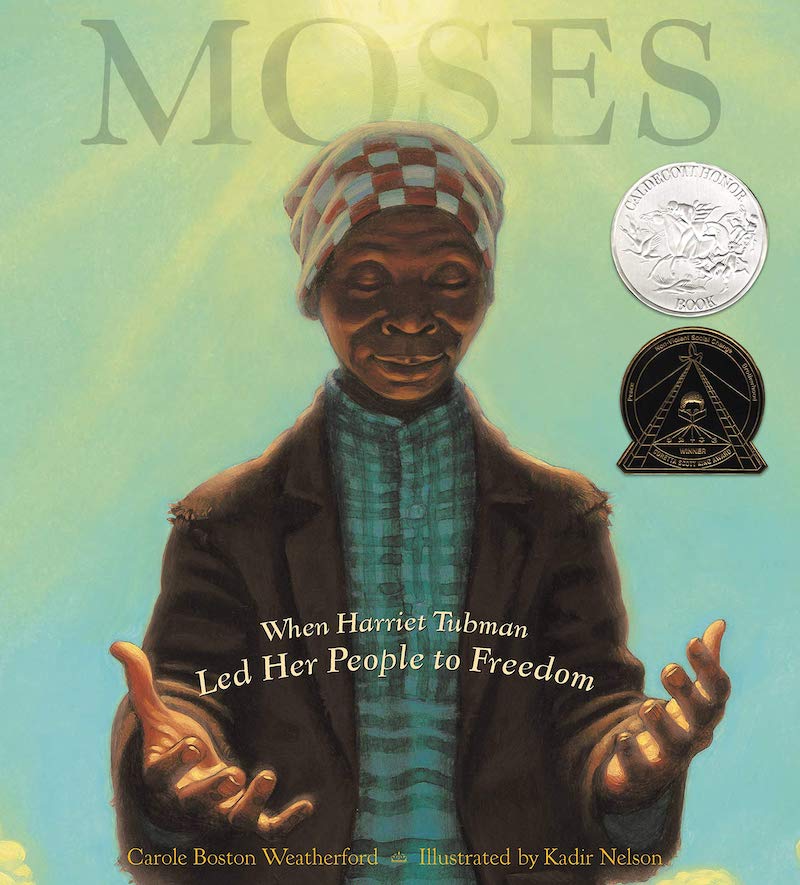
This Caldecott Honor Book and Coretta Scott King award-winning picture book combines lyrical text with gorgeous illustrations to tell Tubman’s story. It recounts how she heard the word of God telling her to seek freedom, then made 19 more trips to help her fellow enslaved people make the same journey.
2. Harriet Tubman: Conductor on the Underground Railroad , by Ann Petry
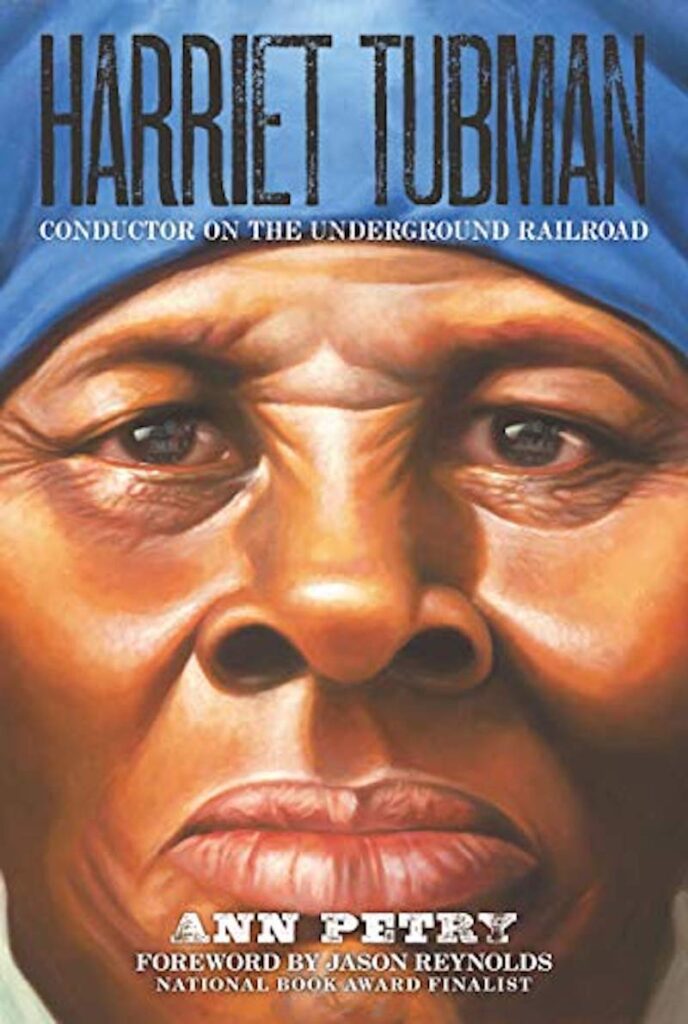
The late Ann Petry was a reporter, activist, pharmacist, and teacher and best known for writing The Street . It was the first book by a Black female author to sell more than a million copies. Her middle-grade Harriet Tubman biography is just as accessible and compelling. It also features a foreward by National Book Award finalist Jason Reynolds.
3. Harriet Tubman: The Road to Freedom , by Catherine Clinton
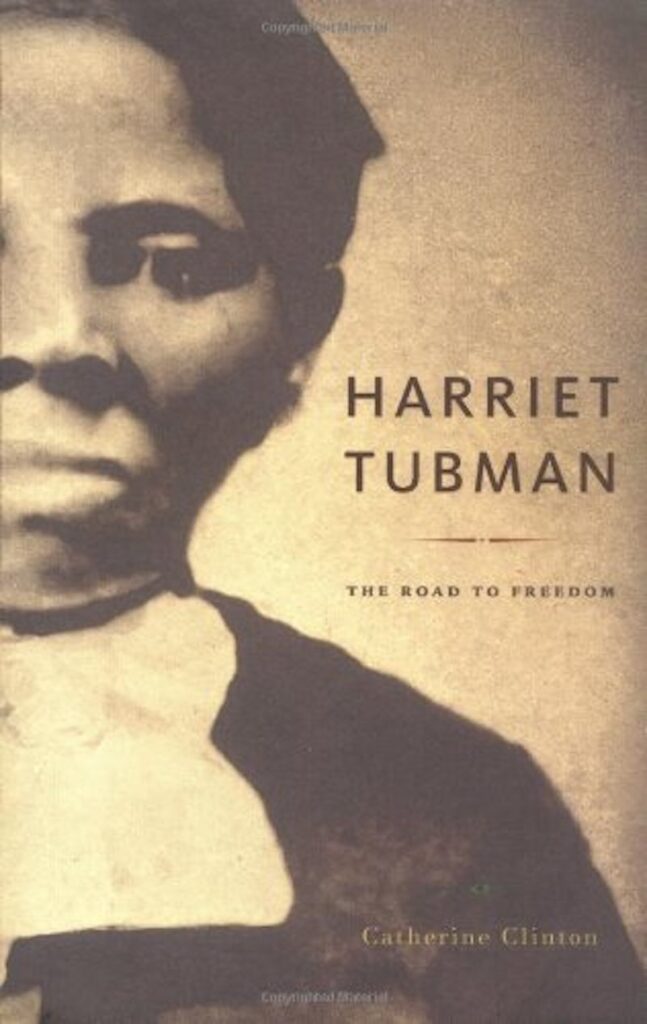
Documentation of Tubman’s work as an Underground Railroad conductor is sparse, but Clinton is able to piece together one of the deepest portraits of her life. She also paints a detailed picture of the era, including depictions of the horrors of enslaved life as well as introductions to other abolitionists who are less well-known.
4. Who Was Harriet Tubman? , by Yona Zeldis McDonough
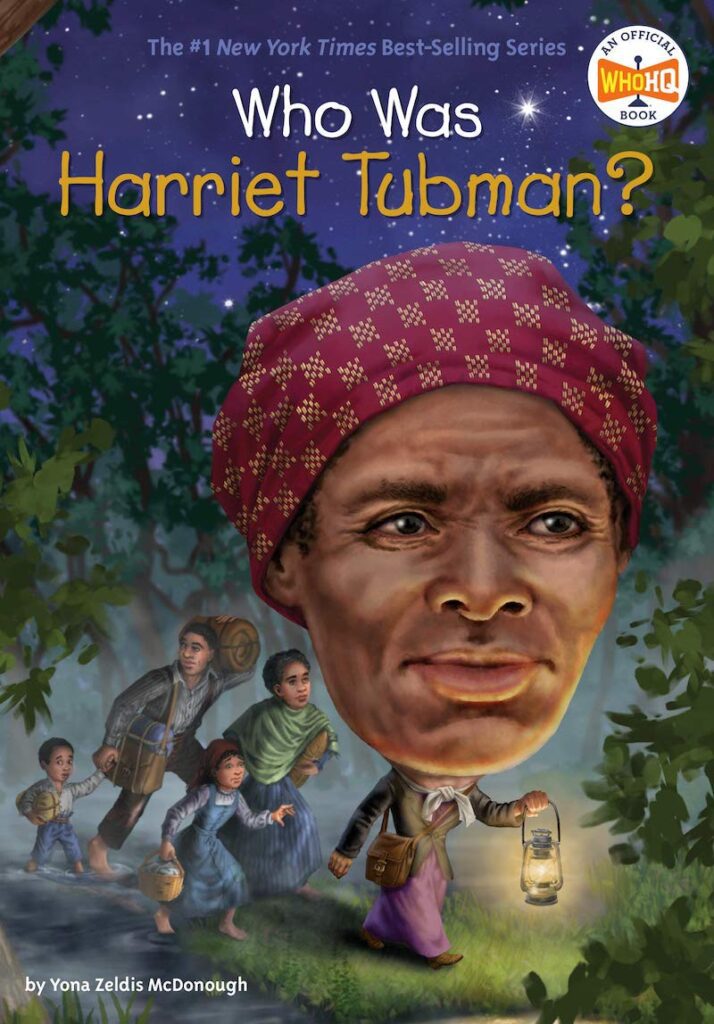
Part of the Who Was? series of biographies aimed at kids 8 to 12, this volume for the school-age set does a good job of introducing kids to Tubman’s life and times. It’s a good starting biography for more reluctant readers.
5. The Story of Harriet Tubman: A Biography Book for New Readers , by Christine Platt
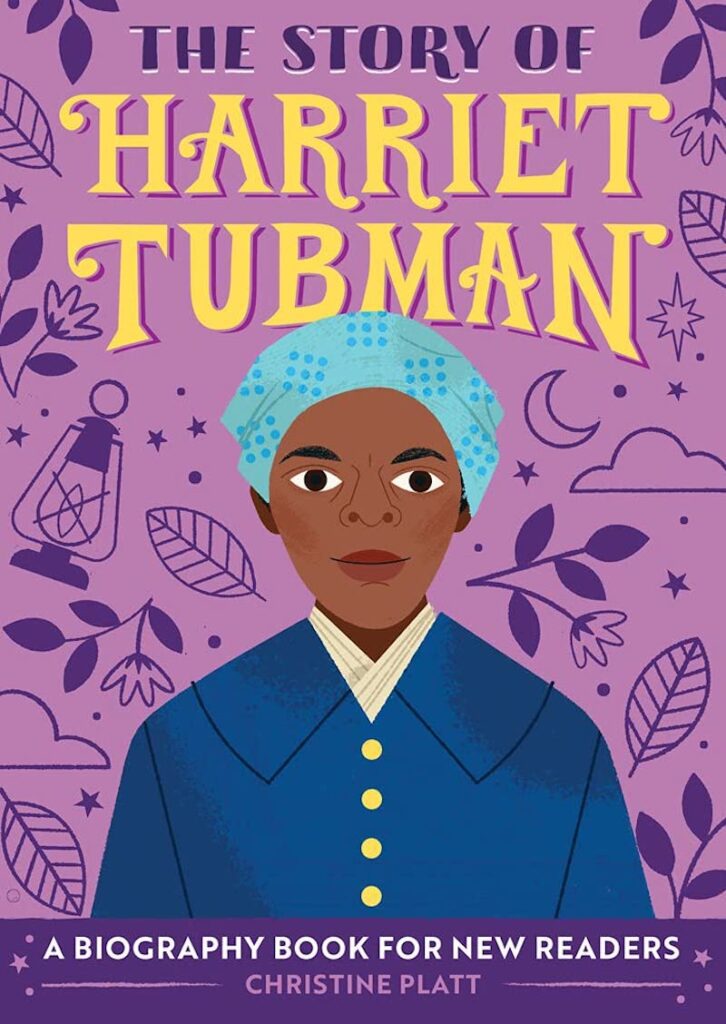
Part of The Story Of: series of books (another biography series geared toward early independent readers), this book incorporates full-color illustrations and informational graphics to present children with a comprehensive picture of American slavery and the Civil War era.
6. National Geographic Readers: Harriet Tubman , by Barbara Kramer
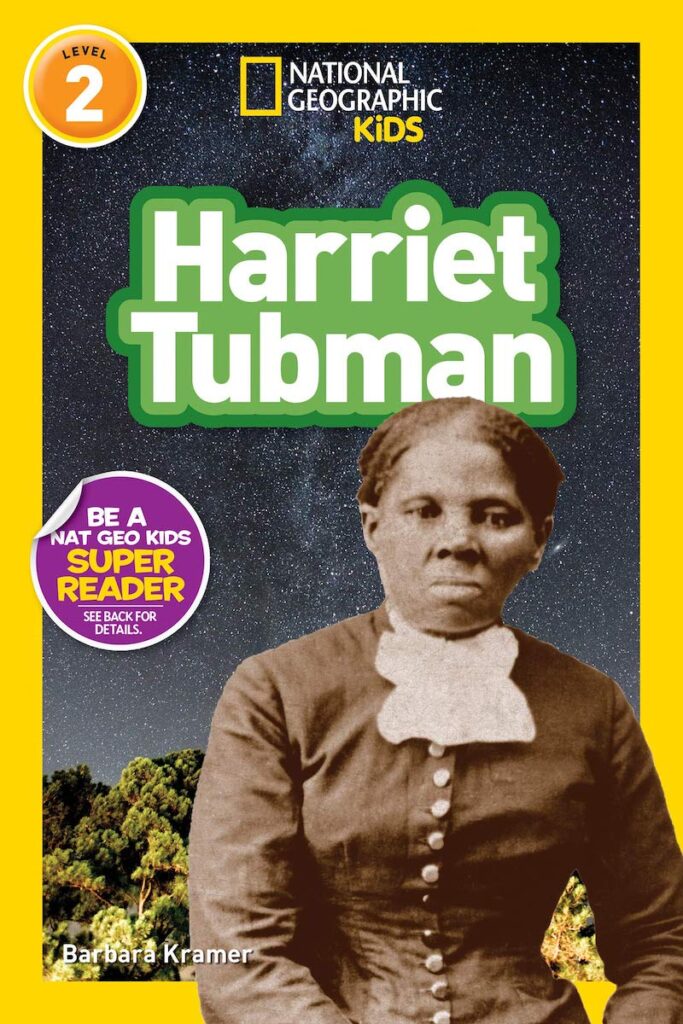
The National Geographic brings its excellent reputation to this Harriet Tubman biography for the youngest independent readers (ages 5 to 8). With colorful photographs, illustrations, and informational graphics, this book is a great introduction to Tubman’s life story.
7. The Story of Harriet Tubman: Conductor of the Underground Railroad , by Kate McMullan
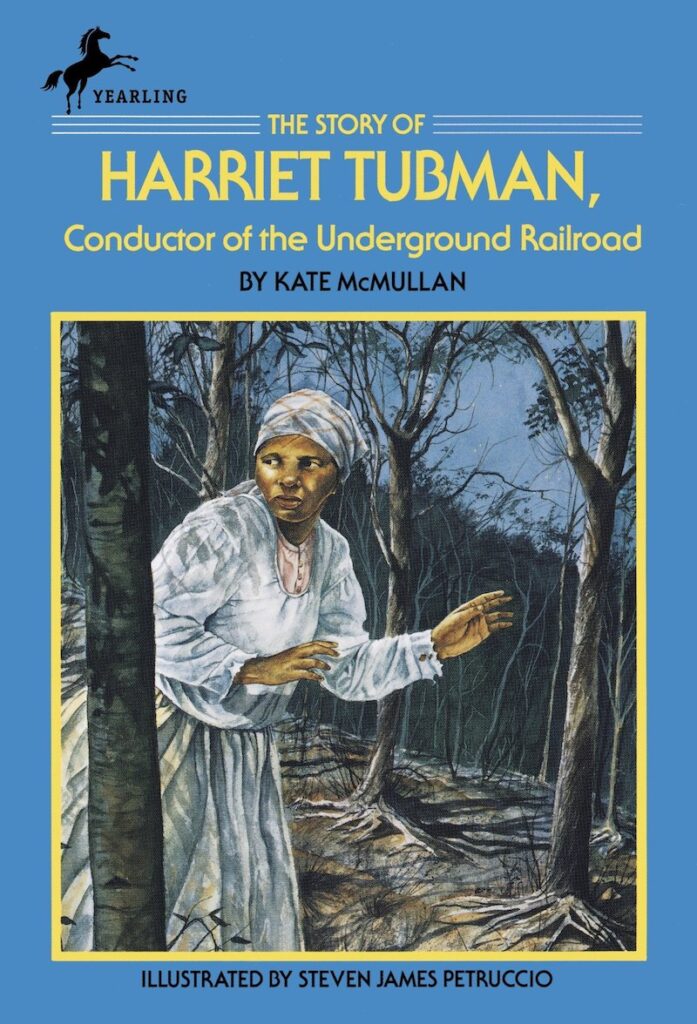
First published in 1990, this biography geared for readers in 3rd to 6th grades is still a top pick. McMullen’s thorough but accessible text details how Tubman helped free more than 300 enslaved people as a conductor. It also sheds more light on her work as a nurse, scout, and spy for the Union Army.
8. I Am Harriet Tubman , by Brad Meltzer
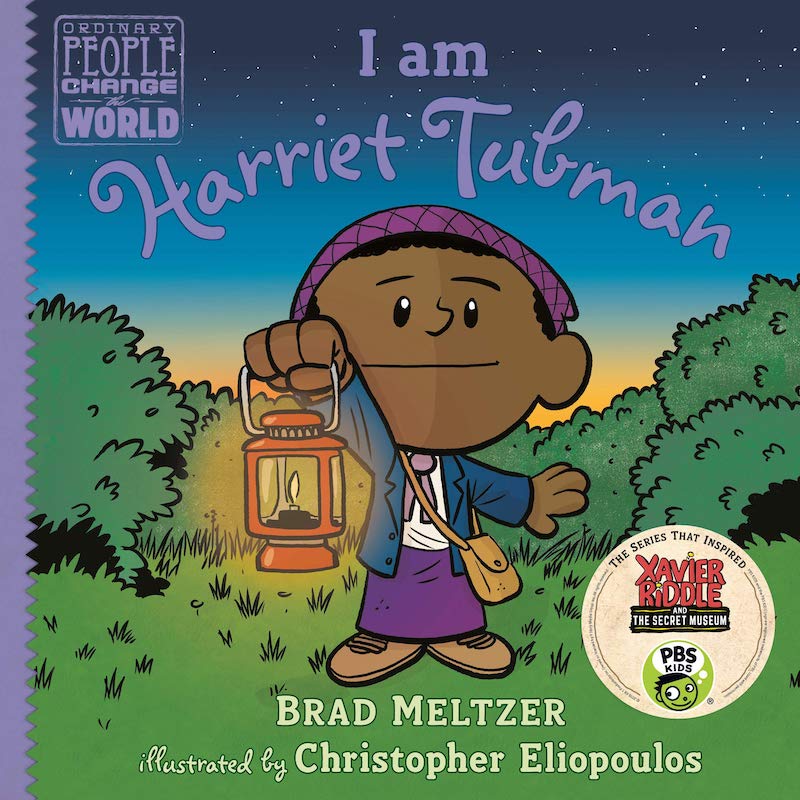
This picture book biography is part of Meltzer’s Ordinary People Change the World series , which have been made into a PBS Kids show. Eye-catching illustrations and a handy timeline give kids plenty to pore over and discuss.
9. Freedom Train: The Story of Harriet Tubman , by Dorothy Sterling
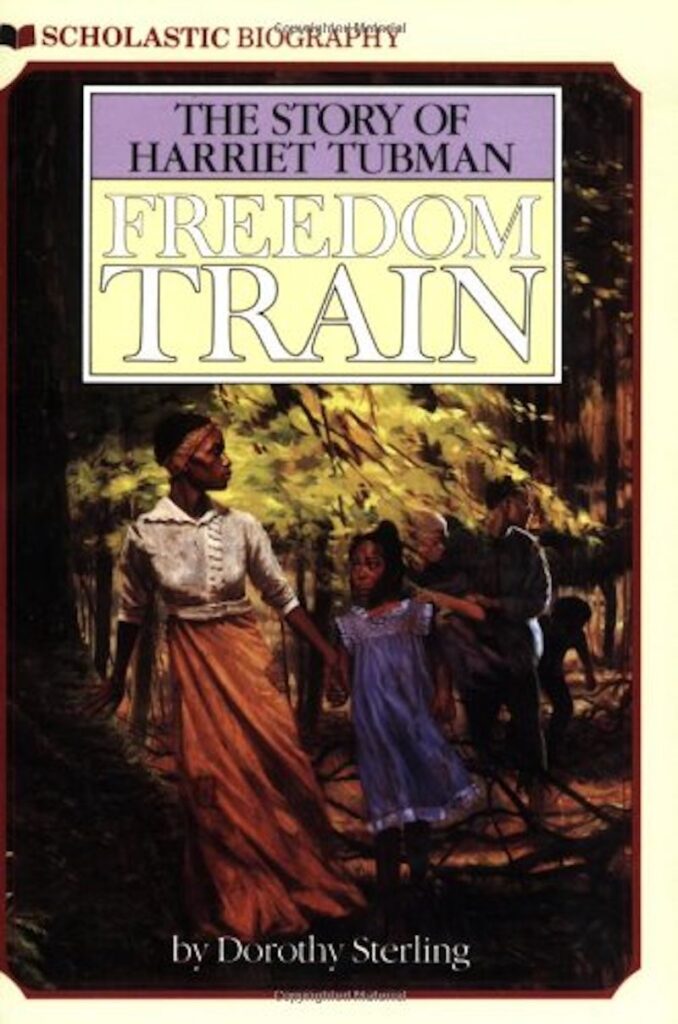
Published in 1987, this is one of the most popular Harriet Tubman books, thanks to Sterling’s excellent research and compelling narrative. The novelistic portrayal of Tubman’s life weaves in dialogue and historical, spiritual songs passed down through generations of enslaved people to provide a gripping portrayal of Tubman’s life and times.
10. She Came to Slay: The Life and Times of Harriet Tubman , by Erica Armstrong Dunbar
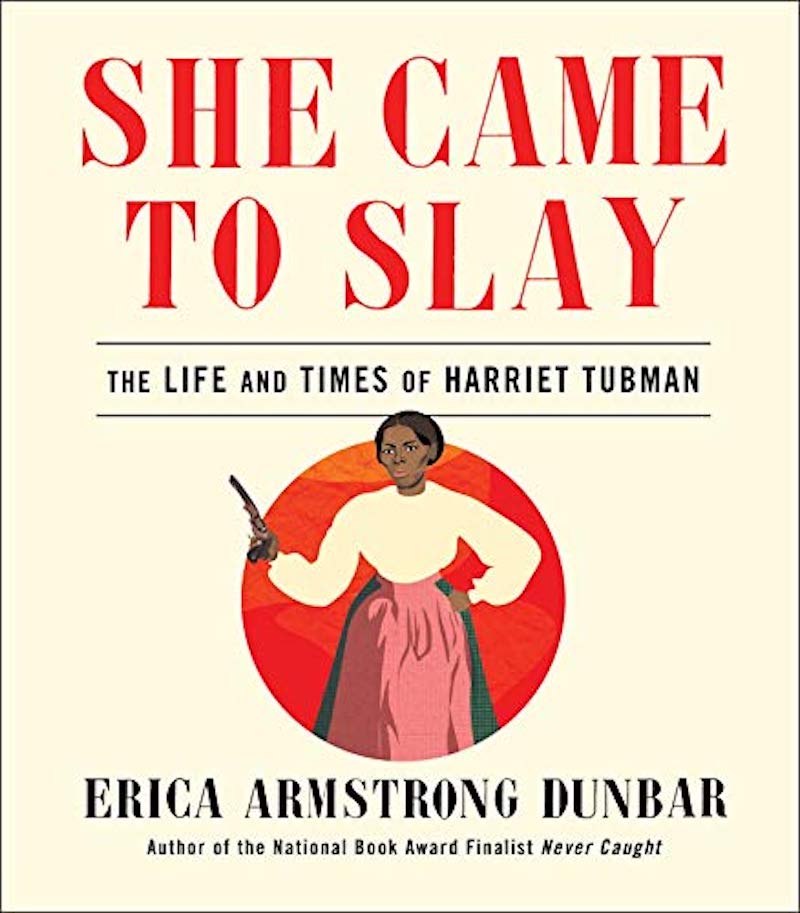
National Book Award finalist Dunbar’s modern and engaging look at Tubman’s life is a must-have for older readers. Featuring illustrations, photos (notably beyond the ones most often seen), and informational graphics, readers will get a lot out of this book even in a quick flip-through.
11. Aunt Harriet’s Underground Railroad in the Sky , by Faith Ringgold
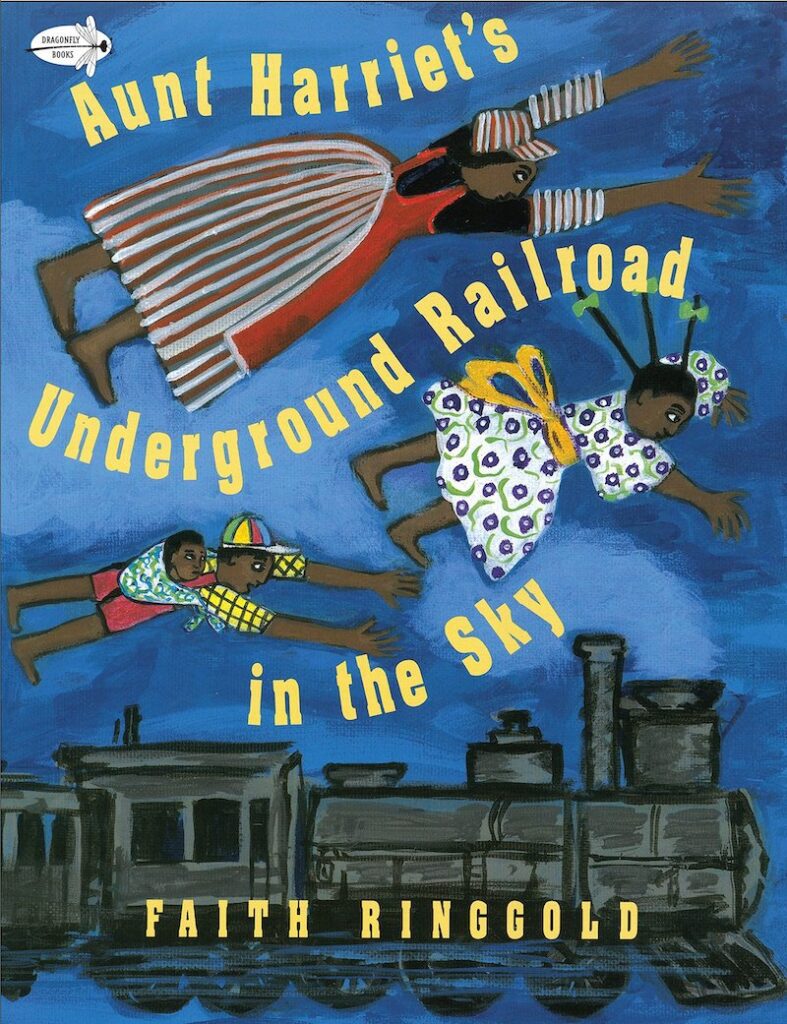
Award-winning author and illustrator Ringgold brings back her character Cassie (from the picture book Tar Beach ) to tell the story of Tubman and the Underground Railroad. The book shines with gorgeous artwork and the author’s commitment to pulling no punches when it comes to talking about the atrocities of slavery.
12. The Underground Abductor: An Abolitionist Tale about Harriet Tubman , by Nathan Hale
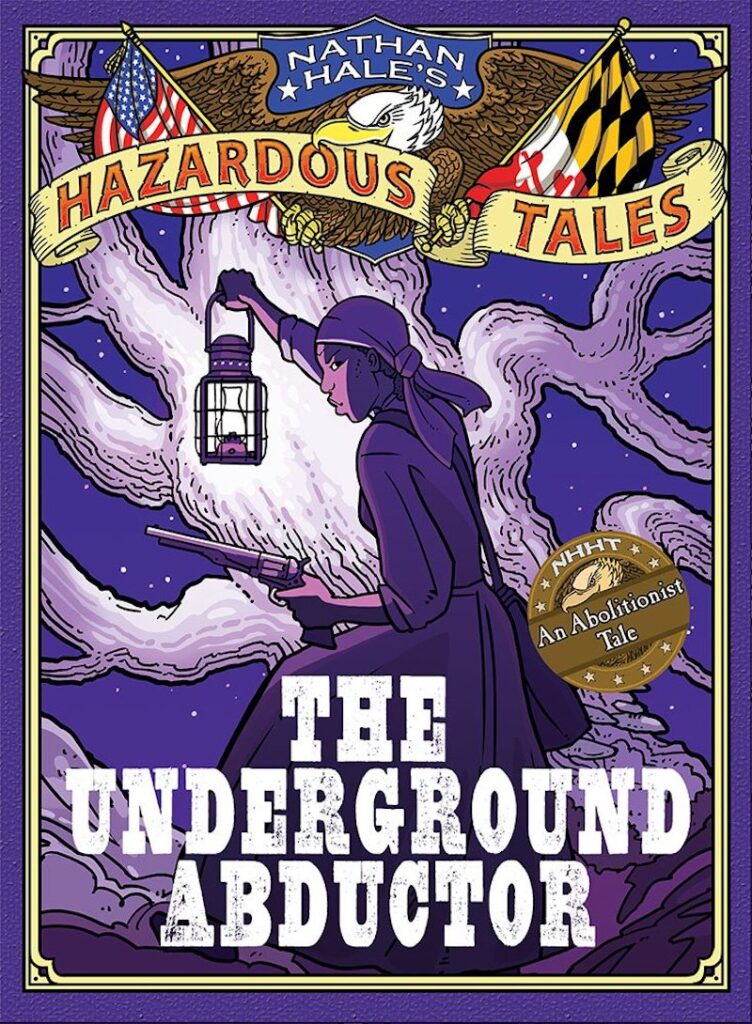
Tubman and the Underground Railroad get the graphic novel treatment as the fifth entry in Hale’s Hazardous Tales series . Like the rest of his collection, Tubman’s story is presented as a comic-book style, complete with danger, comedy, and eye-catching artwork. Tween readers who respond to visual storytelling will get a lot out of this, plus a helpful bibliography of other related works.
13. Little People, Big Dreams: Harriet Tubman , by Maria Isabel Sánchez Vegara
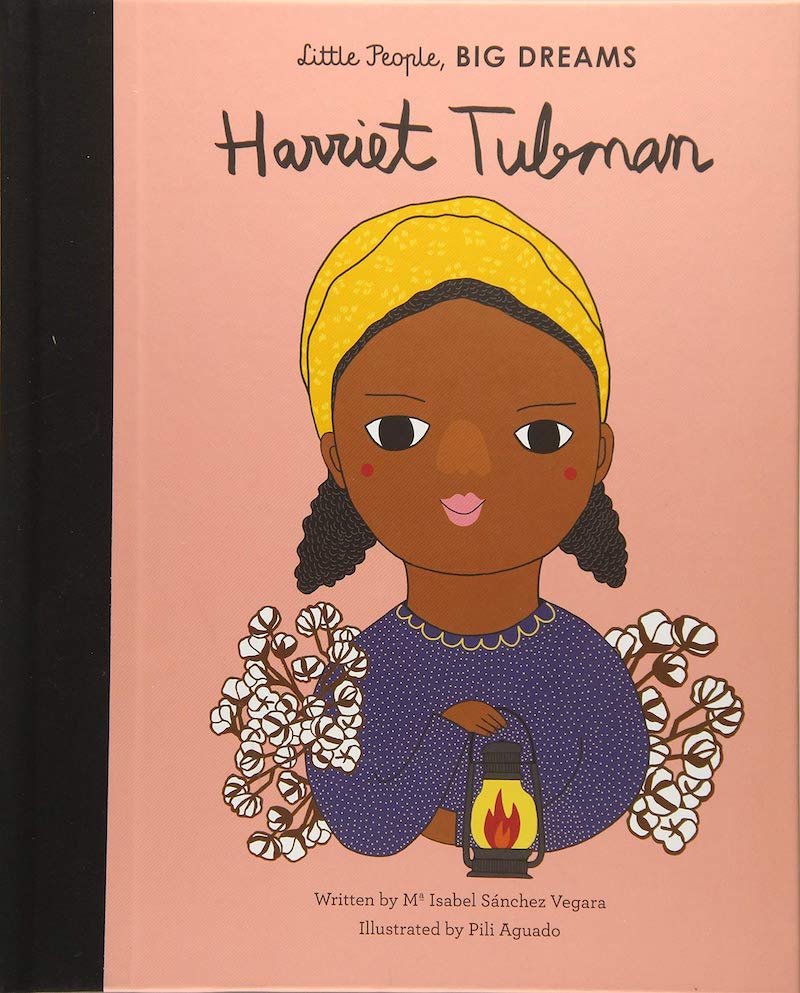
By no means a full account of her life, this preschool-geared Harriet Tubman biography is a great starting point for the youngest learners to get a sense of her amazing life and brave expeditions.
14. What Was the Underground Railroad? , by Yona Zeldis McDonough
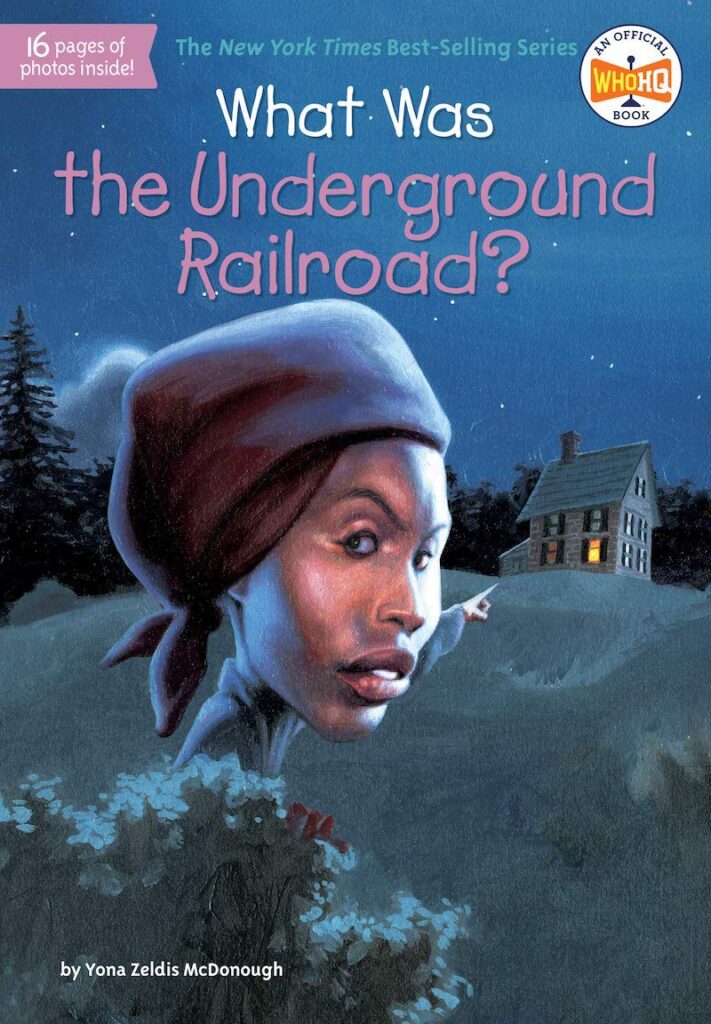
Though not ostensibly about Harriet Tubman, this book’s roundup of stories about “passengers” on the Underground Railroad (which was neither underground nor a railroad) provides a helpful primer for kids interested in learning more about the work for which Tubman is most famous.
15. Before She Was Harriet , by Lesa Cline-Ransome

This multi-award-winning picture book combines gorgeous poetry and stunning watercolor illustrations to tell the story of Tubman’s life. It begins with her as an old woman, traveling backward in time to visit herself in the many roles she played throughout history.
Looking for more inspiring books to share with your students? Check out our list of Martin Luther King Jr. books for all ages.
And subscribe to our newsletter so you can get all our latest book picks..
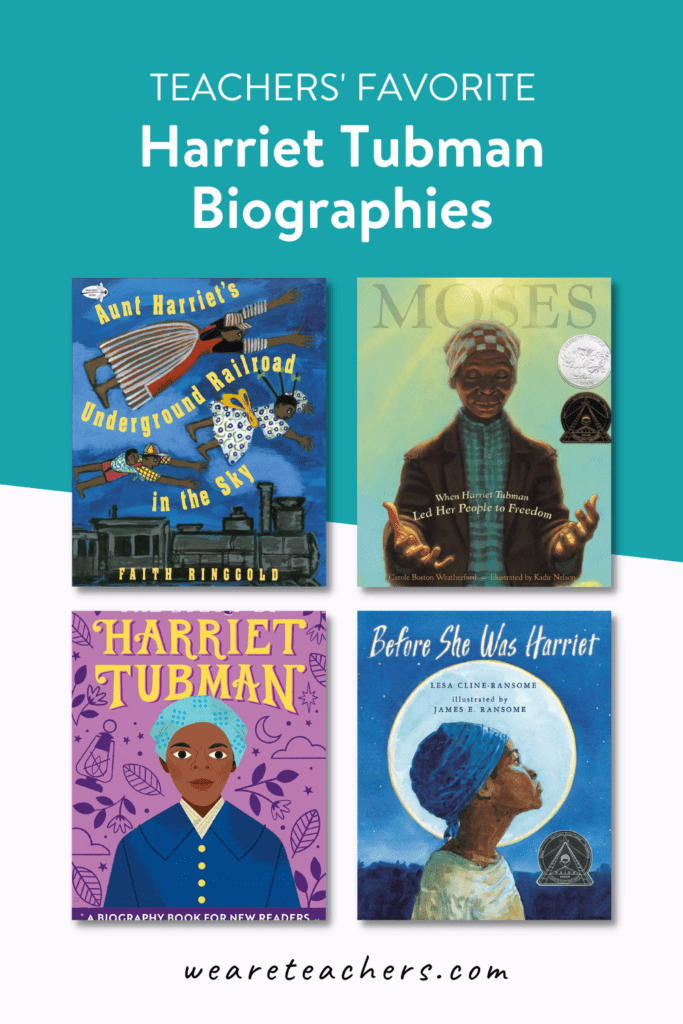
You Might Also Like

What Is Orthographic Mapping? A Guide for Educators and Families
It's a need-to-know concept for anyone helping kids learn to read. Continue Reading
Copyright © 2024. All rights reserved. 5335 Gate Parkway, Jacksonville, FL 32256
Someone San Diego Should Know: Annette Hubbell

She conveys the greatness of historical figures through solo performances
- Show more sharing options
- Copy Link URL Copied!
Harriet Tubman, an escaped slave who participated in a network of safe houses known as the Underground Railroad, stood on the stage alone talking about her life. “On my underground I never ran my train off the track and I never lost a passenger,” she said proudly.
Portraying Tubman was Annette Hubbell, an author and actress who depicts historical figures in a unique way — alone on stage through first-person accounts of their lives.
“The power of storytelling can bridge gaps and foster understanding,” she explained. “True stories can teach us, motivate us and inspire us.”
Since 2009, while otherwise in retirement, Hubbell has performed mostly one-person shows about 400 times in theaters, schools, churches, libraries and club meetings.
She does it because she enjoys “being” those she portrays and communicating who they really were.
Hubbell has conducted extensive research on each of her historical figures and uses their actual words as much as possible.
Her material is taken from the book she authored, “Eternity Through the Rearview Mirror,” which chronicles the lives of 17 historical figures, in first person, using many of their own words. They range from Harriet Tubman, Sojourner Truth and Harriet Beecher Stowe to Johnny Cash, Galileo Galilei, and Johann Sabastian Bach.
“My stories are true,” Hubbell said. “I write what they actually said.”
It took Hubbell more than five years to write the 230-page book that includes 41 pages of footnotes. Research took up most of the five years.
“I used the internet, source documents, biographies and autobiographies, interviewed experts and visited sites,” Hubbell said. “Accuracy was extremely important.”
Her performances have received positive reviews over the years. A trailer of her work can be found at:
www.youtube.com/watch?app=desktop&v=K42l-ULMRqU
“The captivating artistry of Annette Hubbell is absolutely unique. Her talents on stage draw audiences into the amazing worlds, varied time periods and fascinating lives she re-creates. Annette may be consistently counted on to be accurate, educational and thoroughly entertaining,” wrote Wayne Scott, President of LifeHouse Theater in Redlands.
“I’ve found myself a niche,” Hubbell said. “There are not many people doing this.”
Born in 1948 and raised in San Diego, Hubbell has never taken acting lessons or even acted until 2009. She has a bacheor’s degree in marketing from San Diego State and an MBA from Cal State San Marcos. She began as a secretary at Fotomat and worked her way, through education and experience, to become general manager of a water district.
In 2007, Hubbell and her husband, Monte, since deceased, traveled east on a vacation and attended a re-enactment performance near Gettysburg. That gave her the idea to take up acting.
“I wrote some of my lines in shorthand on my palm for my first performance,” she recalled.
Today, Hubbell, 75, lives in Poway and is retired except for acting.
She performs Women Warriors, where she portrays historical figures from her book. Each portrayal is 20 minutes in length, which allows her to tailor performances to the times allotted.
Her only negative experience occurred when she was scheduled to perform March 21 three requested historical figures, including Harriet Tubman, at a local library.
Two weeks before the engagement, Hubbell received a request to change the performance. “I am sorry for asking this request at such short notice, but our administration was uncomfortable with you performing a Black character as a White woman,” wrote a library administrator.
Hubbell refused, and the library canceled her performance.
“I was quite taken aback,” Hubbell said. “Since I’ve been performing these characters, there has never been a hint of offense, even from anonymous surveys. And why should there be? Am I only to honor White women? How could we ever explore our common humanity with these kind of restrictions?
“I did not choose them for their station in life, their gender, their ethnicity. To paraphrase Dr. Martin Luther King Jr., I chose them solely for the content of their character.”
Following this experience, Hubbell said she may begin portraying men depicted in her book. “Maybe some good can come from this. It opened my eyes.”
About this series
Goldsmith is a Union-Tribune contributing columnist.
We welcome reader suggestions of people who have done something extraordinary or otherwise educational, inspiring or interesting and who have not received much previous media. Please send suggestions to Jan Goldsmith at [email protected]
More in this section

Someone San Diego Should Know
Someone San Diego Should Know: Jeanne McAlister
The outgoing CEO of the McAlister Institute has spent decades helping people recover from substance abuse
May 2, 2024

Someone San Diego Should Know: Tracy Dixon-Salazar
Mom dove into science to help find answer to her daughter’s epilepsy
April 18, 2024
Featured Topics
Featured series.
A series of random questions answered by Harvard experts.
Explore the Gazette
Read the latest.

Should NATO step up role in Russia-Ukraine war?

It’s on Facebook, and it’s complicated
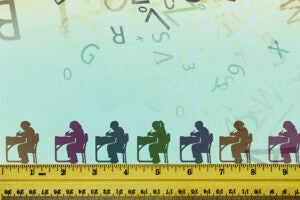
How far has COVID set back students?

Robin Bernstein.
Stephanie Mitchell/Harvard Staff Photographer
Footnote leads to exploration of start of for-profit prisons in N.Y.
Historian traces 19th-century murder case that brought together historical figures, helped shape American thinking on race, violence, incarceration
Christy DeSmith
Harvard Staff Writer
Robin Bernstein was looking for something else when she stumbled on a bit of information about a murder in 19th-century upstate New York.
That accidental discovery served as inspiration for “Freeman’s Challenge: The Murder That Shook America’s Original Prison for Profit,” a new book by the Dillon Professor of American History and chair of the American Studies program.
At the center is William Freeman, a mixed-race African American and Indigenous man convicted of horse thievery in 1840. Sentenced to five years of hard labor at Auburn State Prison, Freeman was forced to manufacture goods for various private entities.
Upon his release, he set about campaigning for back wages. When that failed, he lashed out with a grisly crime that would help shape how Americans came to think about race, criminality, and imprisonment.
The Gazette caught up with Bernstein, also a professor of African and African American Studies and of Studies of Women, Gender, & Sexuality, to learn more about this previously unexamined history. The interview was edited for length and clarity.
Where did you find the story of William Freeman?
It was in a footnote. There, I came upon an 1846 theatrical show about how William Freeman murdered four white people, including a toddler and a grandmother.
One of my areas of expertise is theater history. I knew it was nearly unheard of at mid-19th century for a show to depict Black-on-white violence. At the time, even performances of “Othello” took great pains to avoid it, because white people did not want to see it.
I asked myself, “Why were these white people in Auburn, N.Y., behaving so differently from white people across the nation?” I knew something amazing had happened, and I had to learn what it was.
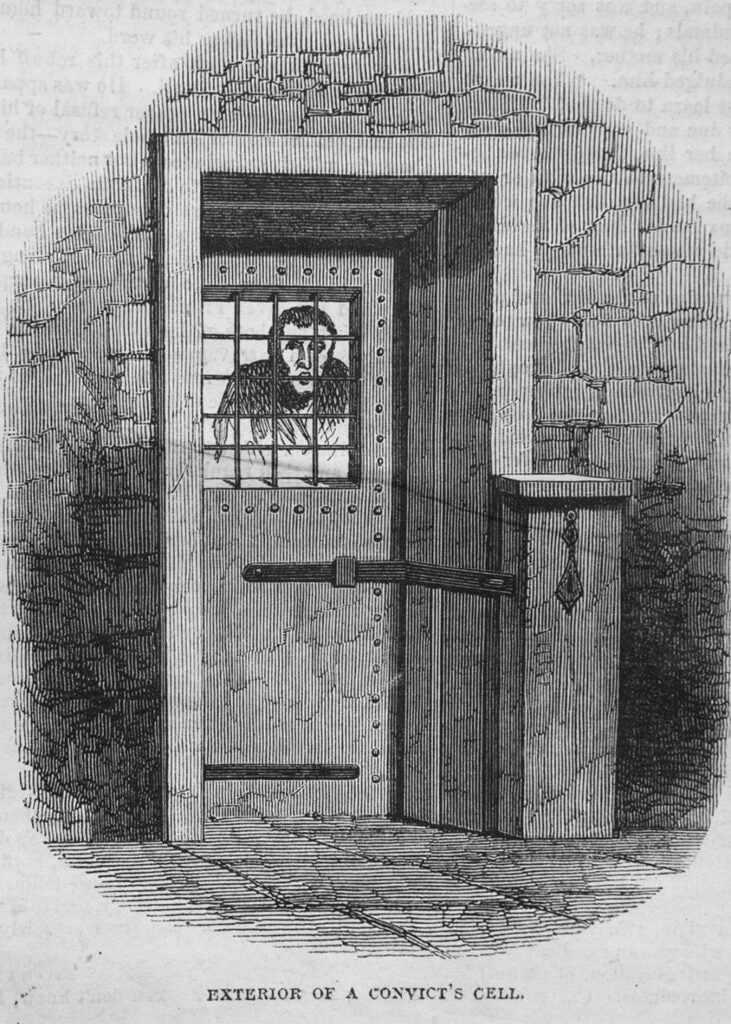
Exterior of a convict’s cell at Auburn State Prison.
Harper’s Weekly, 18 December 1858, 809.
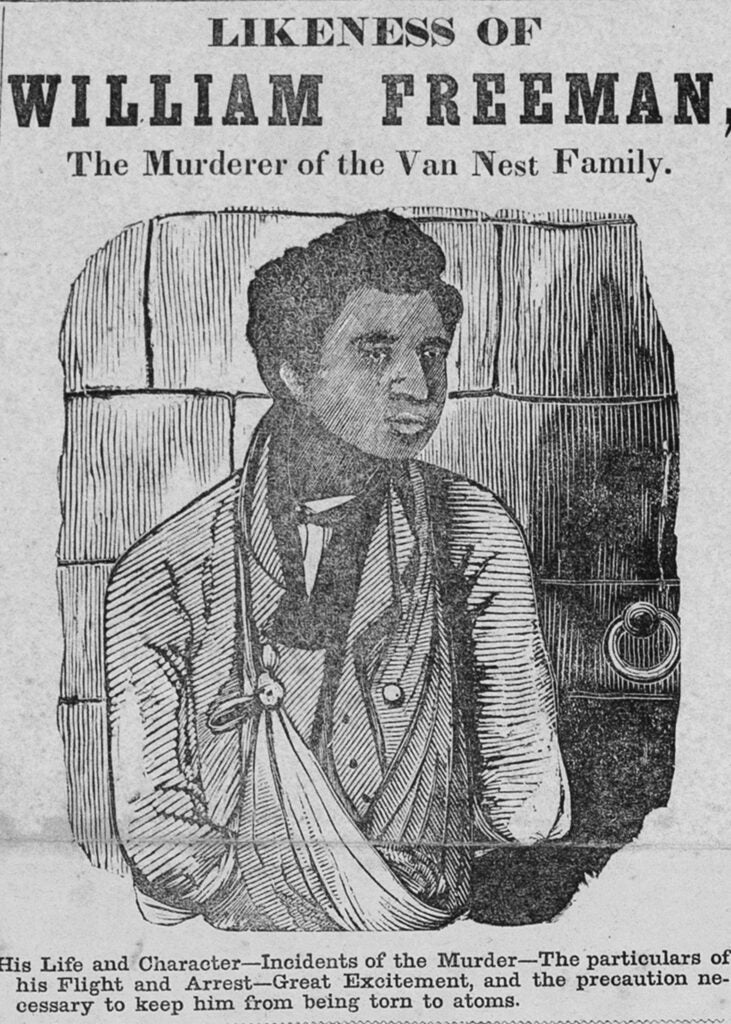
Rendering of William Freeman, Daily Cayuga Tocsin — Extra, 19 March 1846.
William L. Clements Library, University of Michigan, Ann Arbor.
So how did Freeman initially land in prison?
Freeman was from a family that had just completed the process of gradual emancipation and named themselves Freeman. The name speaks to who they considered themselves to be — and what future they were choosing for themselves.
When Freeman was 15 years old, a horse was stolen. He was accused. There was no physical evidence against him, but it didn’t matter. He was tried and convicted and sentenced to five years in the Auburn State Prison, where he was subjected to convict-leasing. He was forced to manufacture animal harnesses and dyes and carpets, all of which were sold by private companies.
Freeman was furious at being forced to labor, as he put it, “for nothing.” By nothing, he meant no crime — because he always insisted he was innocent of the horse theft — and no pay. He was explicit about both of those meanings. He considered himself a worker, not a slave.
I understand that Auburn State Prison was itself an innovation.
The Auburn State Prison is very important, because it originated prison-for-profit . It originated the idea that a prison could function primarily to generate wealth rather than control or punish or rehabilitate criminals.
There’s a common perception that profit-driven convict leasing was invented by the South after the Civil War, as part of a white effort to re-enslave African Americans. But my book reveals how the North invented this system half a century earlier, in the wake of Northern, not Southern, slavery.
The Auburn State Prison opened in 1817. By the 1840s, it was an economic force throughout New York State. Meanwhile, the Auburn System, as it was called, was being exported. There were many dozens of prisons being built on the Auburn System all over the United States and Europe. San Quentin, for example, would soon be built on Auburn’s model.
Your book details Auburn State Prison’s innovations in another area: violence. What kinds of violence did Freeman experience there?
One of the central forms of violence was extreme social isolation. The Auburn system involved each prisoner being sequestered in solitary confinement every night. During the day, they worked in factories that were built into the prison, but they were forbidden from ever speaking.
While Freeman was incarcerated, a prison administrator invented a machine for waterboarding. Freeman was waterboarded, but he was also whipped and flogged. At one point he was beaten with a board that split on his head and he suffered a brain injury. He also became almost completely deaf.

I find it interesting that Freeman never sought a legal remedy for his physical injuries . He focused exclusively on back wages.
It was legally possible to sue for injury at the time, but he never tried. When he got out, in 1845, he tried to collect what he considered back pay. He appealed to magistrates. He was laughed at and dismissed. And then he committed an act of terrorism that was a strike against the state, a strike against the system of prison-for-profit.
Freeman stabbed to death four members of the Van Nest family in their home within hours of seeking back pay for the last time. I hesitate to rehash the details.
What was most important to me was not the blow-by-blow of how Freeman killed the family, but rather how he described it: He called it “work.” That tells us what is at the core of his concern. He had been forced to work in prison factories for no pay, and now he extracted “payback” through a murder that he called “work.” It was an immense irony.
Let’s move on to the murder trial. It was a high-profile case and the two lawyers involved were significant historical figures. Who were they and what did they argue?
Twenty years after the trial, William Henry Seward became Abraham Lincoln’s secretary of state, which is what he’s most remembered for today. He’s also remembered for brokering the purchase of Alaska — if you’ve ever heard of “Seward’s Folly.”
At the time of the trial, in 1846, he was a recent past governor of New York state. He was living and working as a lawyer in Auburn and decided to take Freeman’s case pro bono.
Seward argued that Freeman was insane, and that he committed the crime because he was insane, and that he became insane as a result of racism. Seward was not ventriloquizing arguments that were already widespread. He was crafting them. Seward basically made the social pathology argument that [Assistant Secretary of Labor under President Lyndon B. Johnson] Daniel Patrick Moynihan would make a century later [in his 1965 report on Black poverty ].
It’s an argument that continues to have enormous purchase today. And let’s name it clearly: It is a racist argument that criminalizes Black people.
Who was Seward’s adversary, and what did he argue?
The prosecution was led by John Van Buren, who was the son of recent President Martin Van Buren. What we know right away is that this was a clash of the titans. This was a former governor versus the son of a president and a grisly crime, an enormously disturbing crime. Newspaper readers across the nation were riveted.
Van Buren made a different racist argument. His argument was that Freeman committed this murder because of inherent racial savagery. In different ways, Seward and Van Buren were both arguing that Freeman committed these crimes because he was Black and Native American, which is completely contrary to everything that Freeman ever said. Freeman said that he did it because his wages were stolen from him by the emerging system of prison-for-profit.
Why did nobody hear what Freeman said about his actual motive?
On some level, they did hear it. They were just enormously threatened, the white population in particular. We need to understand Auburn as a kind of company town. Every person, every business, every physical aspect of the town was connected to the prison. So people had an economic interest in protecting it. The fact that they went to such lengths to invent other reasons for Freeman’s crime, that tells us how hard they were working to not hear what Freeman was saying.
Auburn later emerged as a hub of abolitionist thought. Was there any connection to Freeman?
It’s worth mentioning that the Black community also felt threatened, but for different reasons. Their problem was, how to live in a world in which Freeman had committed these crimes, and how to live with the racist libels that the trial developed and unleashed.
One of the answers became activism. One of the arguments Seward made in court was that Freeman committed his crime because he had been excluded from white schools — and there were no Black schools in Auburn. Afterwards, the Black community very cannily raised money for Black schools.
Also striking was that prior to Freeman’s trial in 1846, there was very little abolitionist activity in the town. All of a sudden, after the trial, Black abolitionist lecturers including Frederick Douglass and Henry Highland Garnet become very interested in Auburn.
The first edition of “Twelve Years a Slave” [1853] by Solomon Northup was published there. The first edition of Douglass’ “My Bondage and My Freedom” [1855] was published there. And then Harriet Tubman moved to Auburn — she spent the second half of her life there — and the first edition of her dictated autobiography [1869] was published in the town.
I understand this as a strike against the trial. Freeman was silenced; he never took the stand. His actual argument was buried under the narratives Seward and Van Buren invented and amplified. So how did Black communities respond? They responded by telling their own stories.
Robin Bernstein will be joined by Brandon M. Terry , John L. Loeb Associate Professor of the Social Sciences, to discuss “Freeman’s Challenge.” 7 p.m. Friday (May 17) Harvard Bookstore.
Share this article
You might like.
National security analysts outline stakes ahead of July summit

‘Spermworld’ documentary examines motivations of prospective parents, volunteer donors who connect through private group page

An economist, a policy expert, and a teacher explain why learning losses are worse than many parents realize
Epic science inside a cubic millimeter of brain
Researchers publish largest-ever dataset of neural connections
Pop star on one continent, college student on another
Model and musician Kazuma Mitchell managed to (mostly) avoid the spotlight while at Harvard
Finding right mix on campus speech policies
Legal, political scholars discuss balancing personal safety, constitutional rights, academic freedom amid roiling protests, cultural shifts

- Children's Books
- Growing Up & Facts of Life

Enjoy fast, free delivery, exclusive deals, and award-winning movies & TV shows with Prime Try Prime and start saving today with fast, free delivery
Amazon Prime includes:
Fast, FREE Delivery is available to Prime members. To join, select "Try Amazon Prime and start saving today with Fast, FREE Delivery" below the Add to Cart button.
- Cardmembers earn 5% Back at Amazon.com with a Prime Credit Card.
- Unlimited Free Two-Day Delivery
- Streaming of thousands of movies and TV shows with limited ads on Prime Video.
- A Kindle book to borrow for free each month - with no due dates
- Listen to over 2 million songs and hundreds of playlists
- Unlimited photo storage with anywhere access
Important: Your credit card will NOT be charged when you start your free trial or if you cancel during the trial period. If you're happy with Amazon Prime, do nothing. At the end of the free trial, your membership will automatically upgrade to a monthly membership.
Return this item for free
Free returns are available for the shipping address you chose. You can return the item for any reason in new and unused condition: no shipping charges
- Go to your orders and start the return
- Select the return method

Download the free Kindle app and start reading Kindle books instantly on your smartphone, tablet, or computer - no Kindle device required .
Read instantly on your browser with Kindle for Web.
Using your mobile phone camera - scan the code below and download the Kindle app.

Follow the author

Image Unavailable

- To view this video download Flash Player
The Story of Harriet Tubman: An Inspiring Biography for Young Readers (The Story of Biographies) Paperback – April 7, 2020
Purchase options and add-ons.
- Independent reading —This Harriet Tubman biography is broken down into short chapters and simple language so kids 6 to 9 can read and learn on their own.
- Critical thinking —Kids will learn the Who, What, Where, When, Why, and How of Harriet's life, find definitions of new words, discussion questions, and more.
- A lasting legacy —Find out how Harriet fought to make the world a better place in this African American history book for kids.
- Part of series The Story Of: A Biography Series for New Readers
- Print length 68 pages
- Language English
- Grade level 1 - 2
- Lexile measure 900L
- Dimensions 5.83 x 0.3 x 8.27 inches
- Publisher Rockridge Press
- Publication date April 7, 2020
- ISBN-10 1646111095
- ISBN-13 978-1646111091
- See all details

Frequently bought together

More items to explore

From the Publisher

Discover just a few of the chapters in Harriet's remarkable and courageous life:

Editorial Reviews
About the author, product details.
- Publisher : Rockridge Press (April 7, 2020)
- Language : English
- Paperback : 68 pages
- ISBN-10 : 1646111095
- ISBN-13 : 978-1646111091
- Reading age : 6 - 8 years, from customers
- Lexile measure : 900L
- Grade level : 1 - 2
- Item Weight : 4.8 ounces
- Dimensions : 5.83 x 0.3 x 8.27 inches
- #23 in Children's Social Activists Biographies (Books)
- #88 in Children's Women Biographies (Books)
- #90 in Children's Multicultural Biographies
About the author
Christine platt.
Christine A. Platt is a historian and storyteller of the African diaspora. She holds a B.A. in Africana Studies from the University of South Florida, M.A. in African Studies from The Ohio State University and received her J.D. from Stetson University College of Law.
Her debut novel, The Truth About Awiti, was published under the penname CP Patrick and won the 2016 Independent Publisher Book Awards Gold Medal for Multicultural Fiction. The Truth About Awiti is currently used in high schools, colleges and universities to teach the history of the trans-Atlantic slave trade. Christine’s highly anticipated children series, Ana & Andrew, will be published on December 15, 2018 (ABDO Books/Calico Kids).
Christine currently serves as the Managing Director of the Antiracist Research & Policy Center at American University under the leadership of National Book Award-winning author, Dr. Ibram X. Kendi. She is a proud member of the Association of Black Women Historians and the Association for the Study of African American Life and History. She is also an Ambassador for Smithsonian’s National Museum of African American History and Culture. Additionally, Christine is a member of the Society of Children's Book Writers and Illustrators.
You can follow Christine on Instagram via @theafrominimalist, where she interacts with thousands of friends and fans on minimalism and, of course, books.
Customer reviews
Customer Reviews, including Product Star Ratings help customers to learn more about the product and decide whether it is the right product for them.
To calculate the overall star rating and percentage breakdown by star, we don’t use a simple average. Instead, our system considers things like how recent a review is and if the reviewer bought the item on Amazon. It also analyzed reviews to verify trustworthiness.
Reviews with images

- Sort reviews by Top reviews Most recent Top reviews
Top reviews from the United States
There was a problem filtering reviews right now. please try again later..
Top reviews from other countries
- Amazon Newsletter
- About Amazon
- Accessibility
- Sustainability
- Press Center
- Investor Relations
- Amazon Devices
- Amazon Science
- Sell on Amazon
- Sell apps on Amazon
- Supply to Amazon
- Protect & Build Your Brand
- Become an Affiliate
- Become a Delivery Driver
- Start a Package Delivery Business
- Advertise Your Products
- Self-Publish with Us
- Become an Amazon Hub Partner
- › See More Ways to Make Money
- Amazon Visa
- Amazon Store Card
- Amazon Secured Card
- Amazon Business Card
- Shop with Points
- Credit Card Marketplace
- Reload Your Balance
- Amazon Currency Converter
- Your Account
- Your Orders
- Shipping Rates & Policies
- Amazon Prime
- Returns & Replacements
- Manage Your Content and Devices
- Recalls and Product Safety Alerts
- Conditions of Use
- Privacy Notice
- Consumer Health Data Privacy Disclosure
- Your Ads Privacy Choices

COMMENTS
The definitive biography of one of the most courageous women in American history "reveals Harriet Tubman to be even more remarkable than her legend" (Newsday).Celebrated for her exploits as a conductor on the Underground Railroad, Harriet Tubman has entered history as one of nineteenth-century America's most enduring and important figures.
While such a brief biography clearly cannot capture the enormity of Harriet Tubman's life and her impact on the world, this biography really does an admirable job of recounting to the reader her general history and gives an overarching look at how Tubman continues to influence the world.
Catherine Clinton. 4.06. 2,945 ratings444 reviews. The definitive biography of one of the most courageous women in American history "reveals Harriet Tubman to be even more remarkable than her legend" (Newsday). Celebrated for her exploits as a conductor on the Underground Railroad, Harriet Tubman has entered history as one of nineteenth-century ...
The essential, "richly researched"* biography of Harriet Tubman, revealing a complex woman who "led a remarkable life, one that her race, her sex, and her origins make all the more extraordinary" (* The New York Times Book Review). Harriet Tubman is one of the giants of American history—a fearless visionary who led scores of her fellow slaves to freedom and battled courageously ...
Tubman conducted eleven trips from Maryland to St. Catherines, Ontario, Canada between 1850 and 1860. All of these journeys-19 in total- over the years made Tubman a hero, with many African Americans-both free and enslaved-dubbing her "Moses" after the biblical figure (Library of Congress 1998 and Balkansky 2020).
"Illiterate but deeply religious, Harriet Tubman was raised on the Eastern Shore of Maryland in the 1820s, not far from where Frederick Douglass was born. As an adolescent, she incurred a severe head injury when she stepped between a lead weight thrown by an irate master and the slave it was meant for. She recovered but suffered from visions and debilitating episodes for the rest of her life.
The definitive biography of one of the most courageous women in American history "reveals Harriet Tubman to be even more remarkable than her legend" (Newsday). Celebrated for her exploits as a conductor on the Underground Railroad, Harriet Tubman has entered history as one of nineteenth-century America's most enduring and important figures.
This concise biography of Harriet Tubman, the African American abolitionist, explores her various roles as an Underground Railroad conductor, Civil War scout and nurse, and women's rights advocate.The legendary Moses of the Underground Railroad, Harriet Tubman was a fiery and tenacious abolitionist who organized and led African American military operations deep in the Confederacy.
The Biography of Harriet Tubman - Ebook written by Sarah H. Bradford. Read this book using Google Play Books app on your PC, android, iOS devices. Download for offline reading, highlight, bookmark or take notes while you read The Biography of Harriet Tubman.
Harriet Tubman (born c. 1820, Dorchester county, Maryland, U.S.—died March 10, 1913, Auburn, New York) was an American bondwoman who escaped from slavery in the South to become a leading abolitionist before the American Civil War.She led dozens of enslaved people to freedom in the North along the route of the Underground Railroad—an elaborate secret network of safe houses organized for ...
"I see Harriet Tubman: the Life and the Life Stories as the most important book on Tubman in the last fifty years." —William L. Andrews "Harriet Tubman: The Life and the Life Stories may be the most comprehensive book on Tubman to date. Humez's book is extremely well researched, and her writing is both incisive and accessible, making it an excellent resource for students as well as ...
This book offers readers an intimate look at Tubman's early life firsthand: her birth as Araminta Ross in 1822 in Dorchester, MD, the harsh treatment she experienced growing up—including being struck with a two-pound iron when she was twelve years old; and her triumphant escape from slavery as a young woman and rebirth as Harriet Tubman.
3. Bound for the Promised Land: Harriet Tubman, Portrait of an American Hero by Kate Clifford Larson. Published in 2004, this book discusses Tubman's accomplishments, personal life and her influences. The book dispels the myths and misconceptions about Tubman and provides a complete profile of the American hero.
Harriet Tubman was born a slave but found her way to freedom. Yet she was not satisfied to stop at merely attending to her own welfare. As a conductor on the Underground Railroad, she risked her life to help many others to escape the degradation of slavery too. Becoming one of the key players in the abolitionist movement, Harriet Tubman brought ...
Pneumonia took Harriet Tubman's life on March 10, 1913, but her legacy lives on. Schools and museums bear her name and her story has been revisited in books, movies and documentaries. Harriet ...
Bradford, an admirer, penned her 1868 biography, Scenes in the Life of Harriet Tubman, with the proceeds going to Tubman and her family. Tubman continued to give freely despite her economic woes.
Tubman, Harriet, 1822-1913, Slaves -- United States -- Biography, African American women -- Biography, Underground Railroad, Antislavery movements -- United States -- History -- 19th century Publisher New York : Back Bay Books Collection printdisabled; internetarchivebooks Contributor Internet Archive Language English
Harriet Tubman (born Araminta Ross, c. March 1822 [1] - March 10, 1913) was an American abolitionist and social activist. [2] [3] After escaping slavery, Tubman made some 13 missions to rescue approximately 70 enslaved people, including her family and friends, [4] using the network of antislavery activists and safe houses known collectively ...
Books. An illustration of two cells of a film strip. Video. An illustration of an audio speaker. Audio. An illustration of a 3.5" floppy disk. Software. An illustration of two photographs. ... Harriet Tubman : the life and the life stories by Humez, Jean McMahon, 1944-Publication date 2003 Topics
Slavery in a new world: The foundation of a new economy Araminta "Minty" Ross: Harriet Tubman's early years Tubman, the freedom fighter: Her years as a conductor Civil War in the United States: Tubman's role in a country divided Life after freedom: Tubman's later years Lessons learned: Tubman's legacy And much more!
This concise biography of Harriet Tubman, the African American abolitionist, explores her various roles as an Underground Railroad conductor, Civil War scout and nurse, and women's rights advocate.The legendary Moses of the Underground Railroad, Harriet Tubman was a fiery and tenacious abolitionist who organized and led African American military operations deep in the Confederacy.
November 10, 2021. This picture book is about a young courageous, brave woman named Harriet Tubman and how she did the impossible to help people gain their freedom. She was able to show the world a person can make a difference and change the future. The illustration of the book was unique as well.
9. Freedom Train: The Story of Harriet Tubman, by Dorothy Sterling. Published in 1987, this is one of the most popular Harriet Tubman books, thanks to Sterling's excellent research and compelling narrative. The novelistic portrayal of Tubman's life weaves in dialogue and historical, spiritual songs passed down through generations of ...
Portraying Tubman was Annette Hubbell, an author and actress who depicts historical figures in a unique way — alone on stage through first-person accounts of their lives. "The power of ...
The first edition of Douglass' "My Bondage and My Freedom" [1855] was published there. And then Harriet Tubman moved to Auburn — she spent the second half of her life there — and the first edition of her dictated autobiography [1869] was published in the town. I understand this as a strike against the trial.
Independent reading —This Harriet Tubman biography is broken down into short chapters and simple language so kids 6 to 9 can read and learn on their own. Critical thinking —Kids will learn the Who, What, Where, When, Why, and How of Harriet's life, find definitions of new words, discussion questions, and more.
Harriet Tubman Underground Railroad State Park & Visitor Center—Eastern Shore Explorer Activity Book 8. Urban Expedition: Pine Street. Directions: Scan the QR Codes below and listen to the song by each musician. List three instruments heard in the song and use one adjective to describe how it makes you feel.